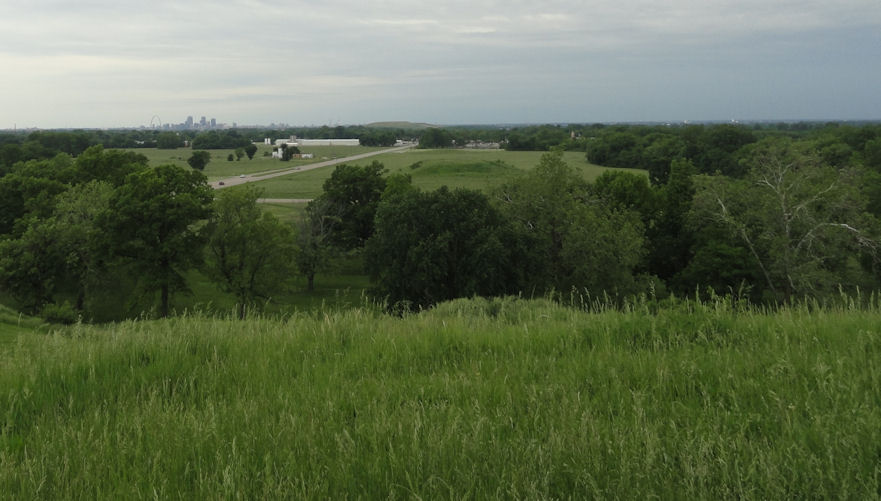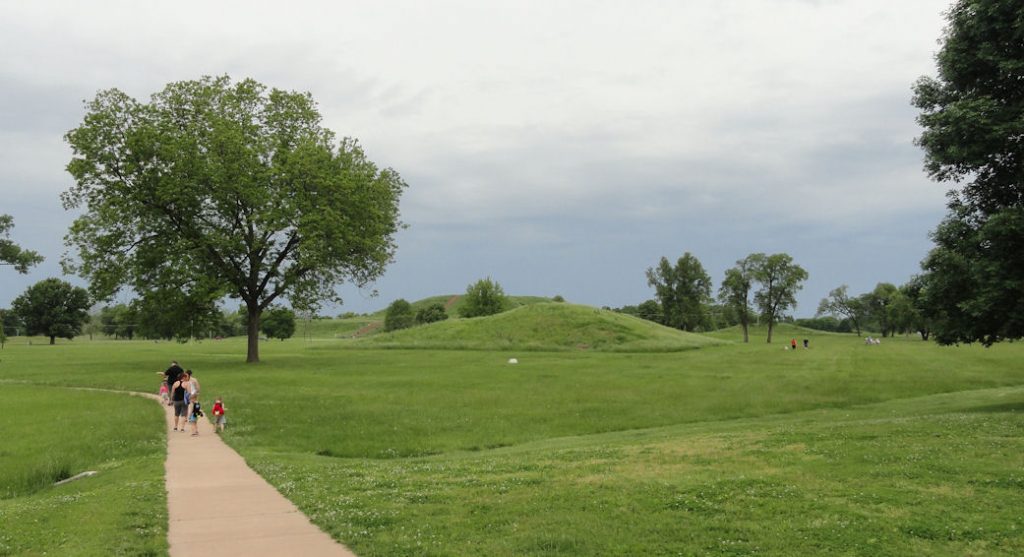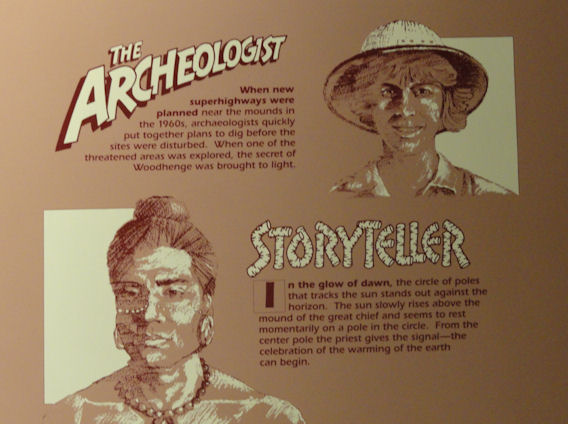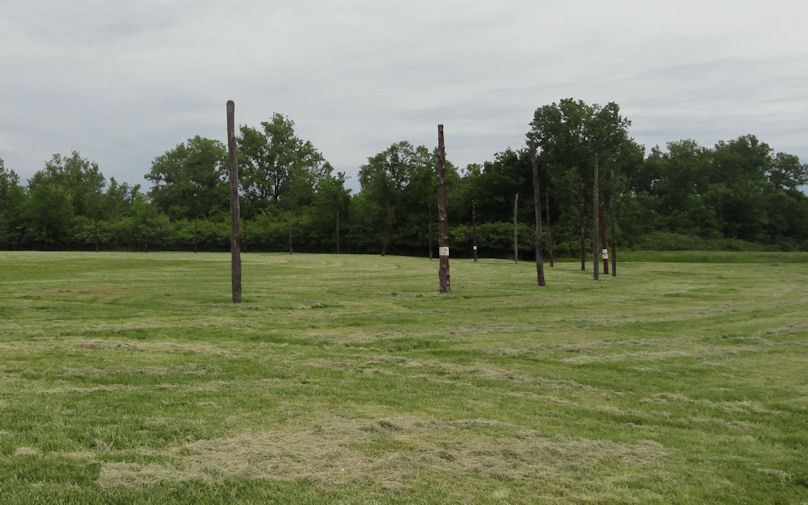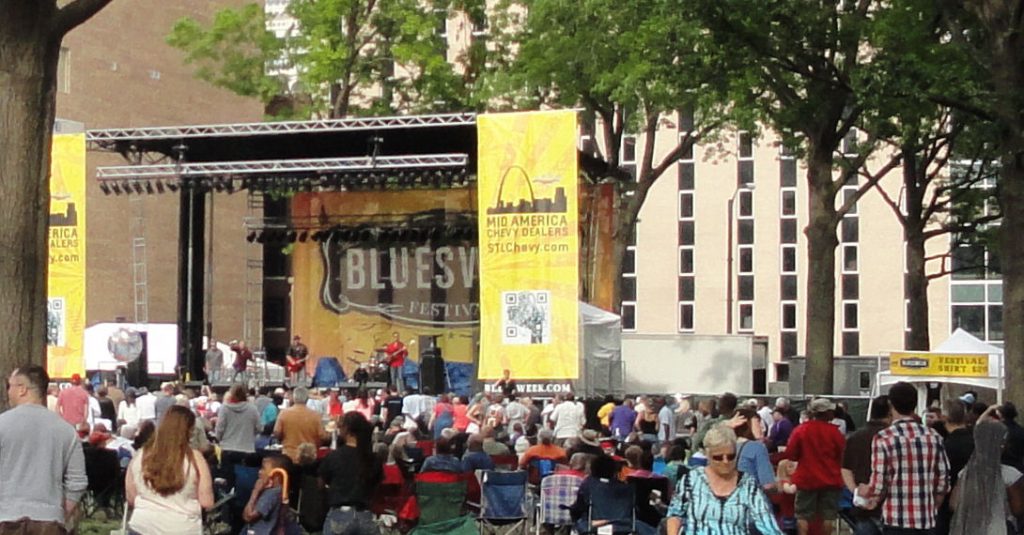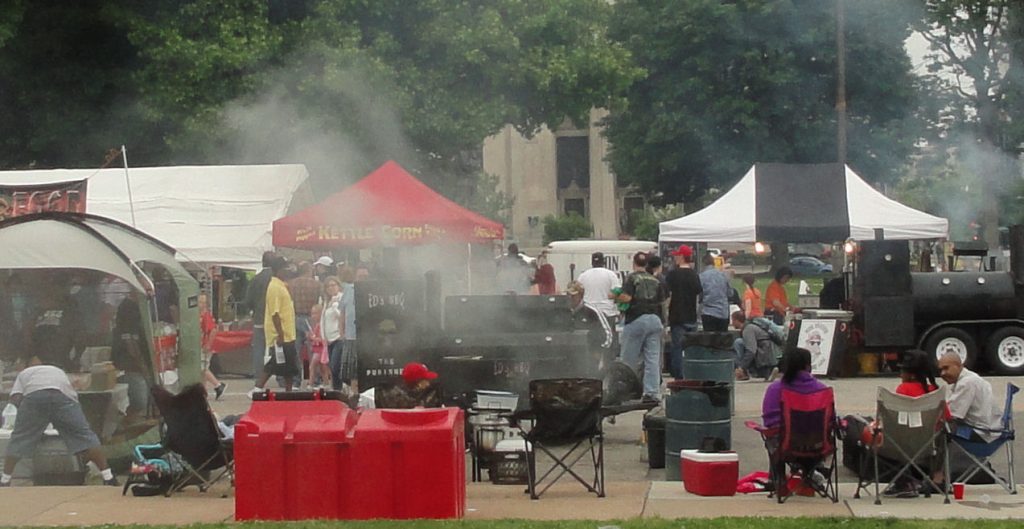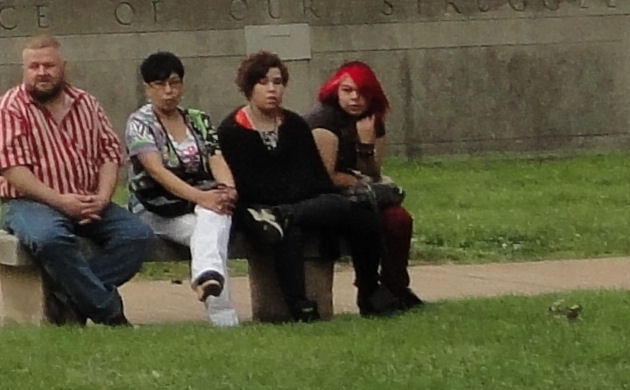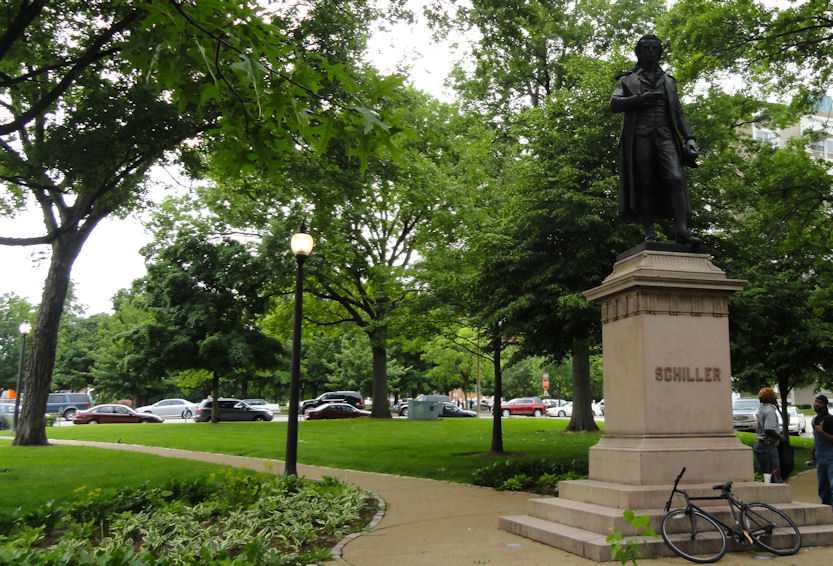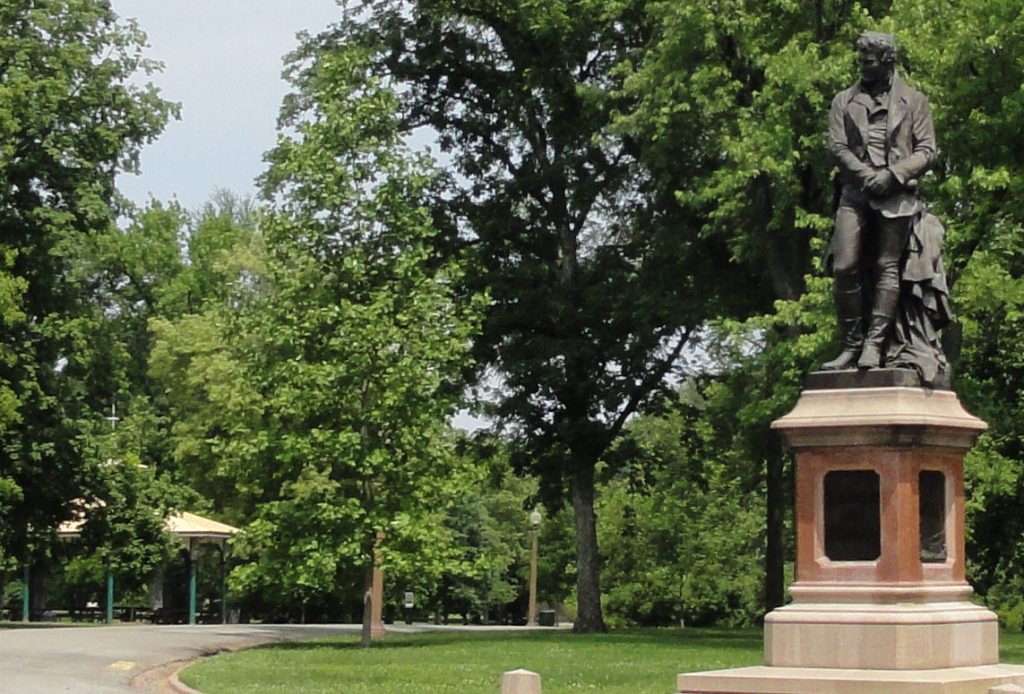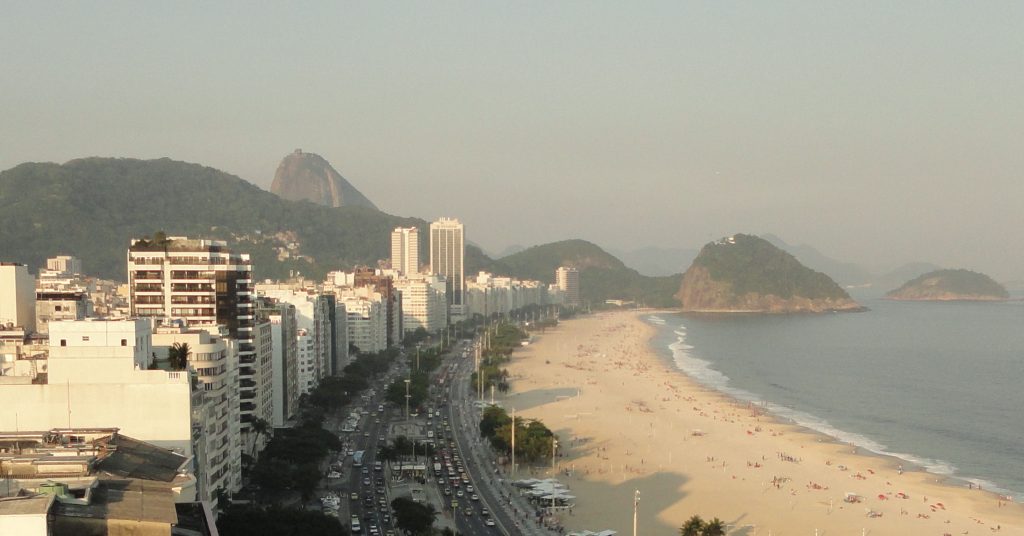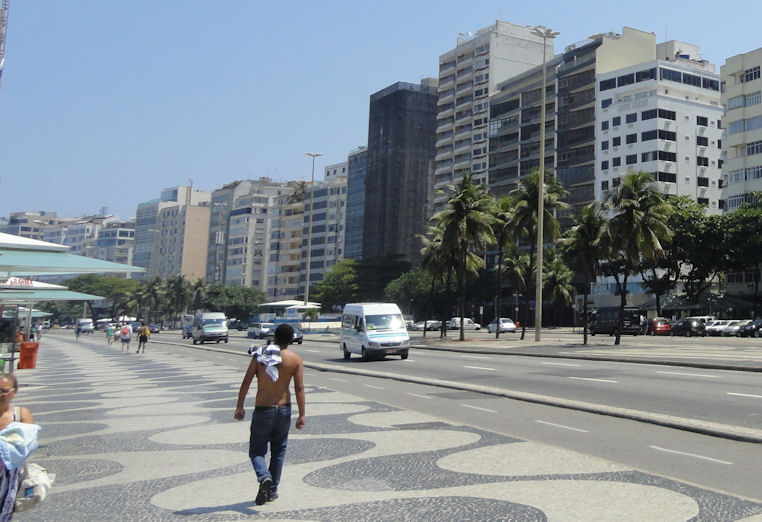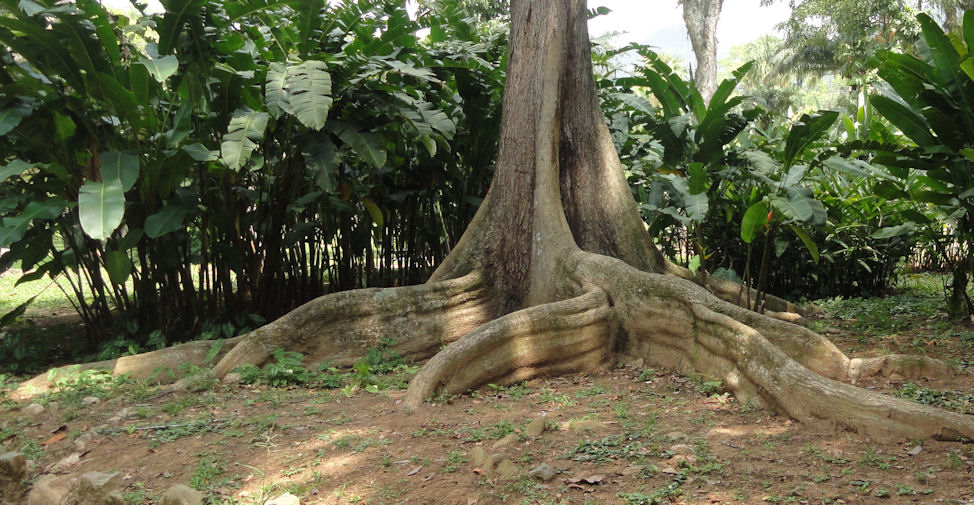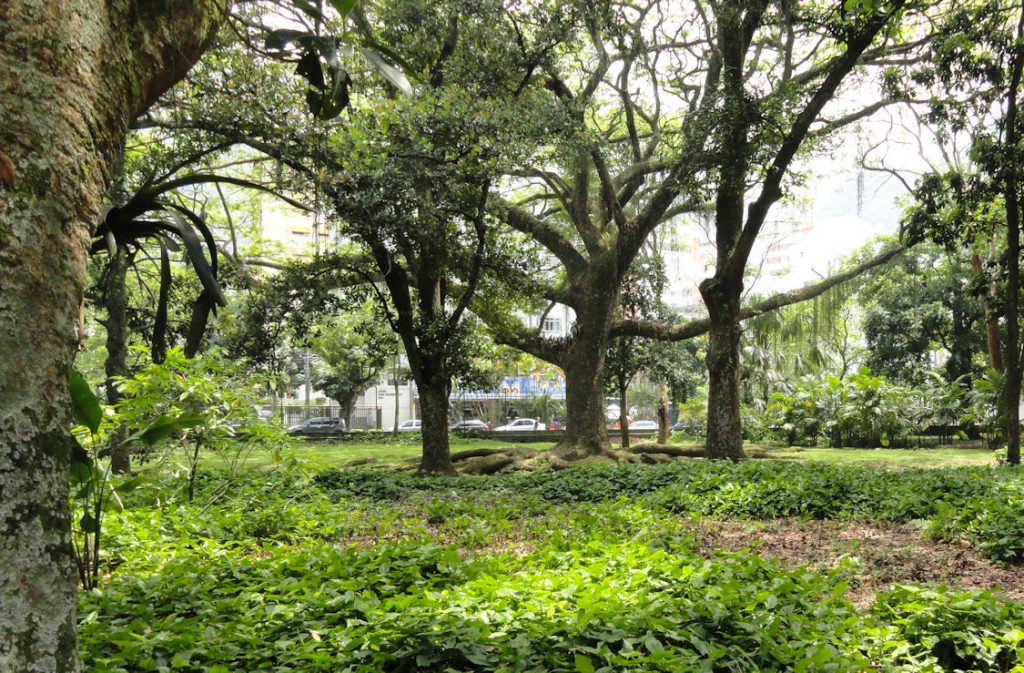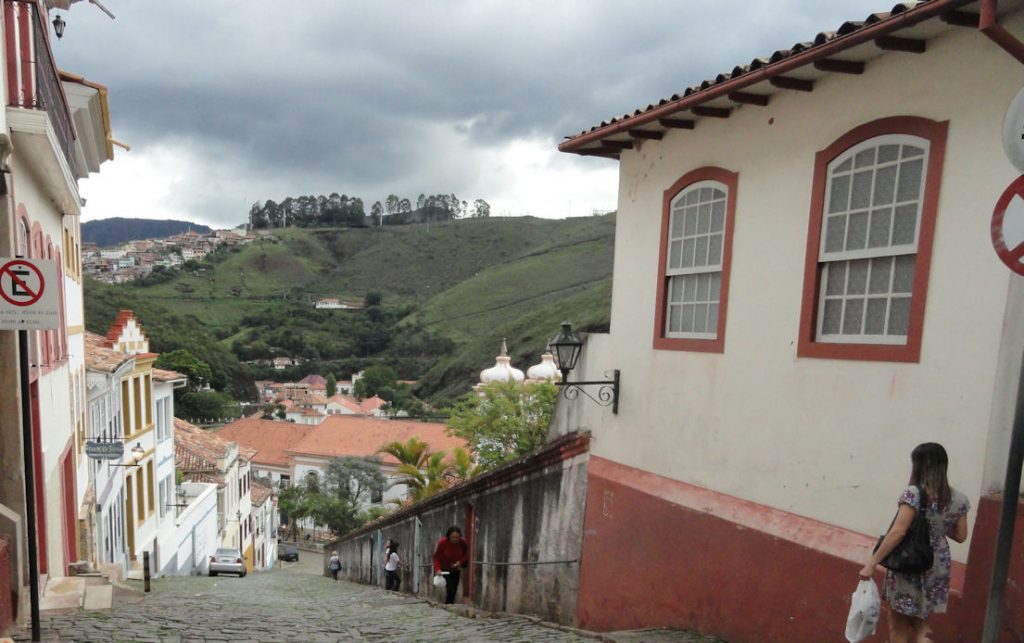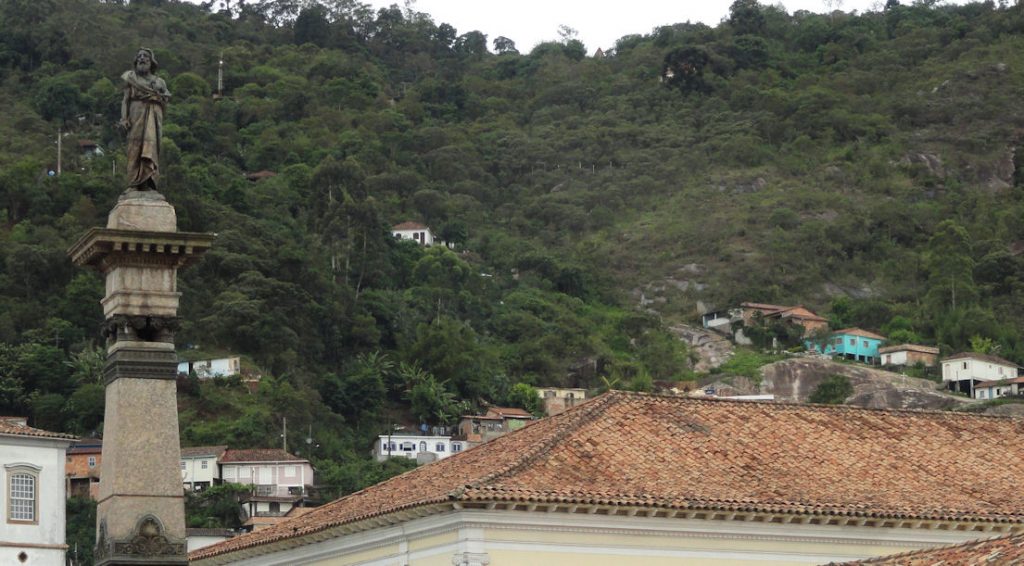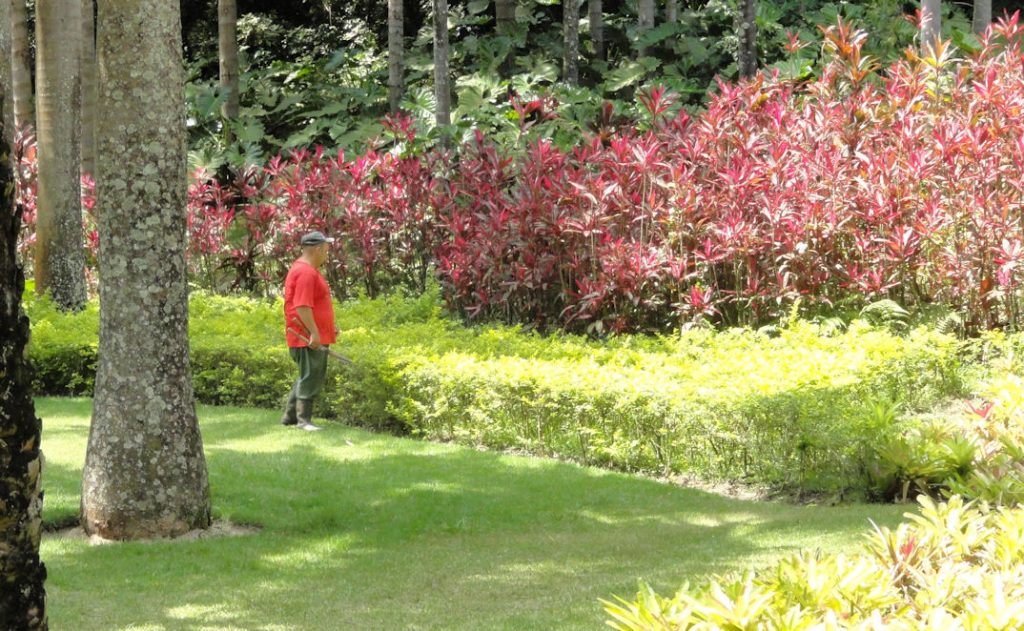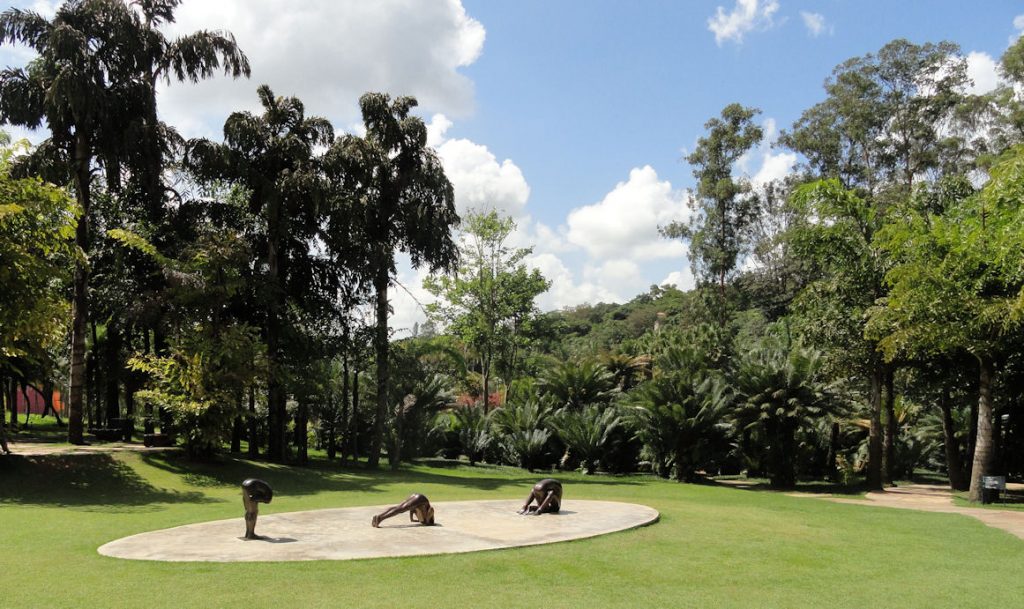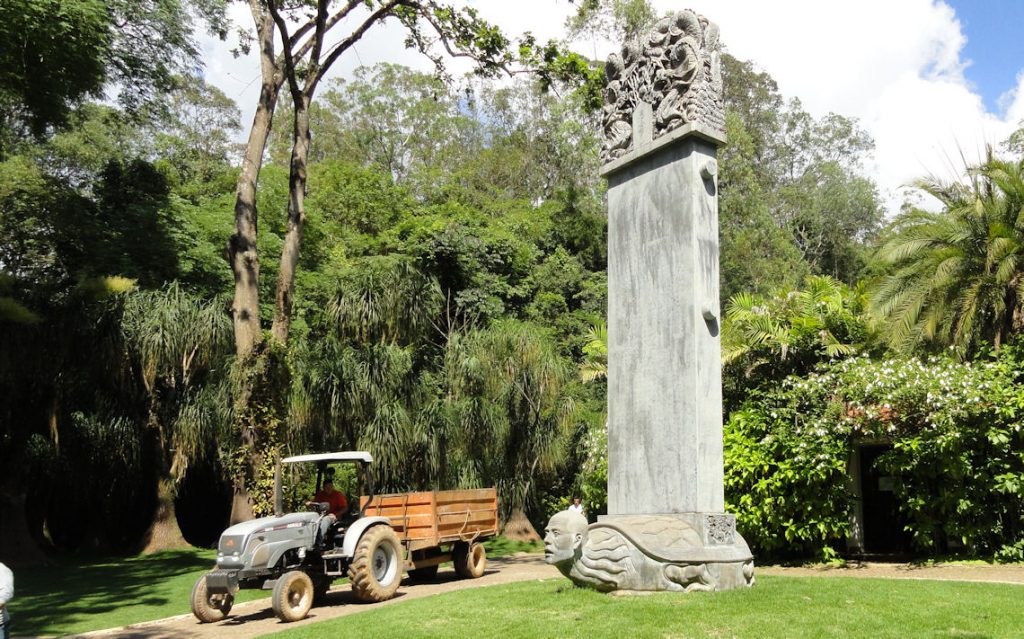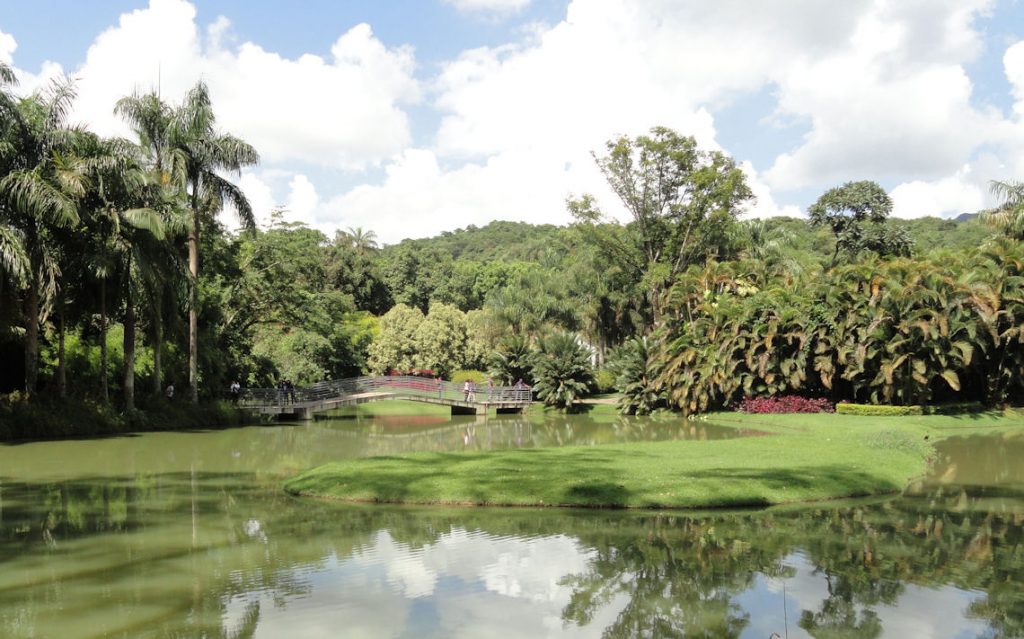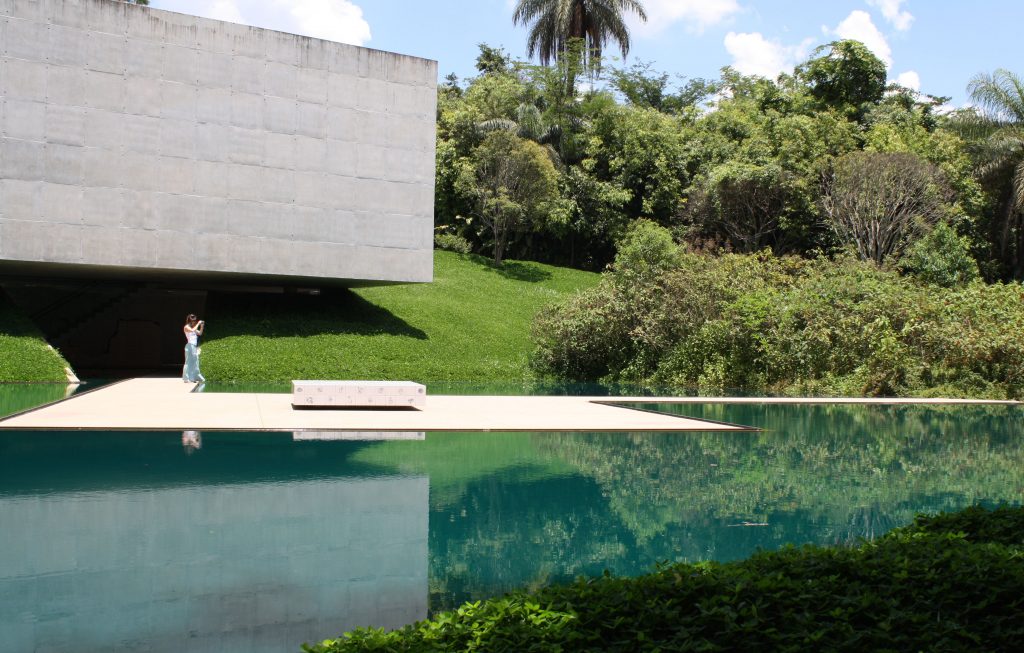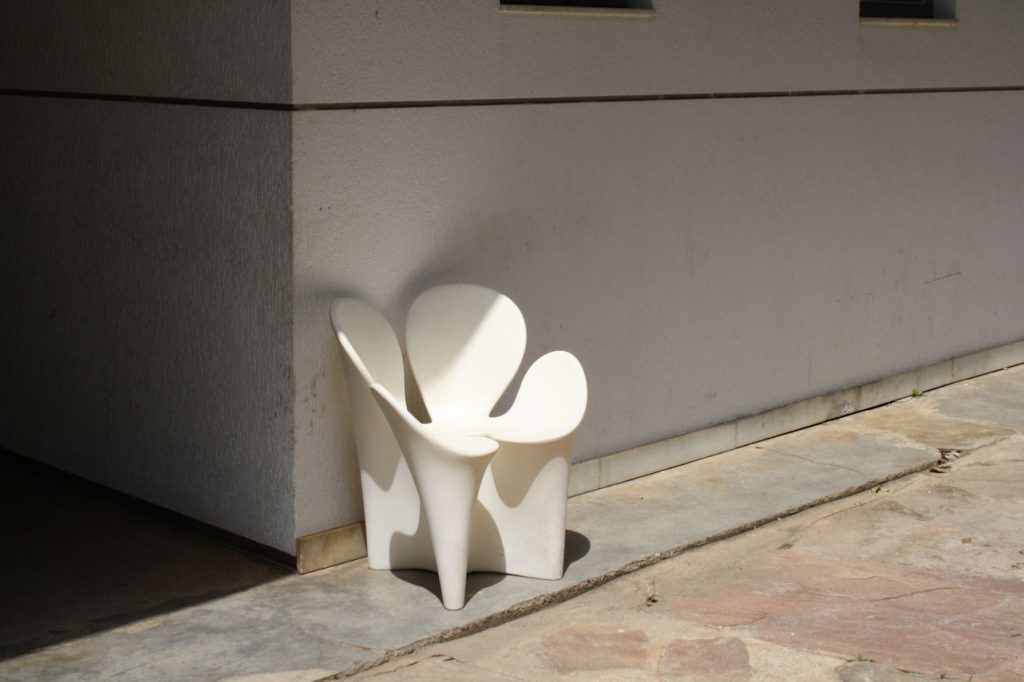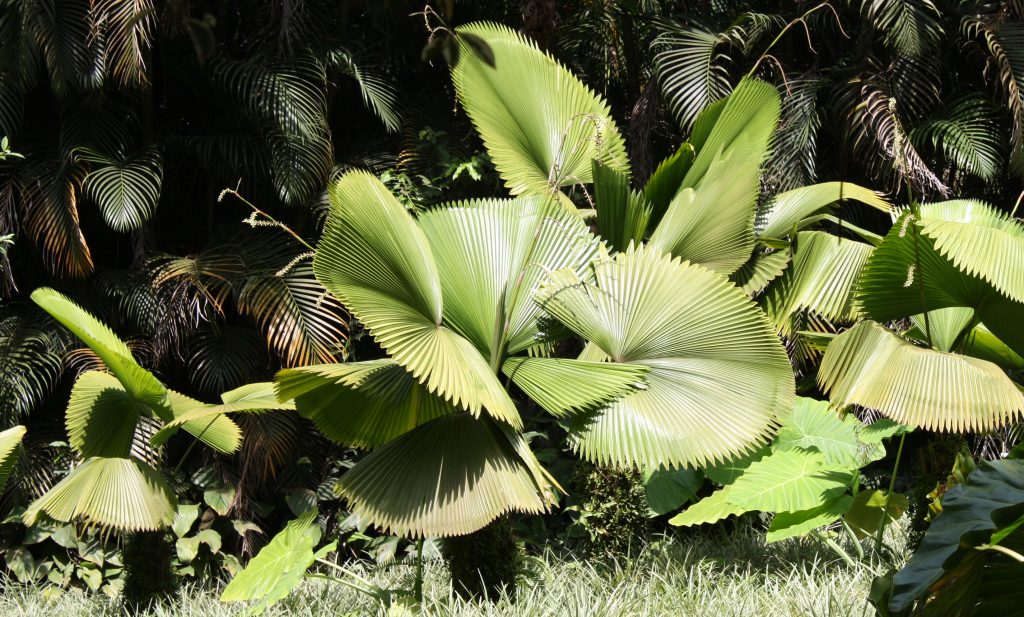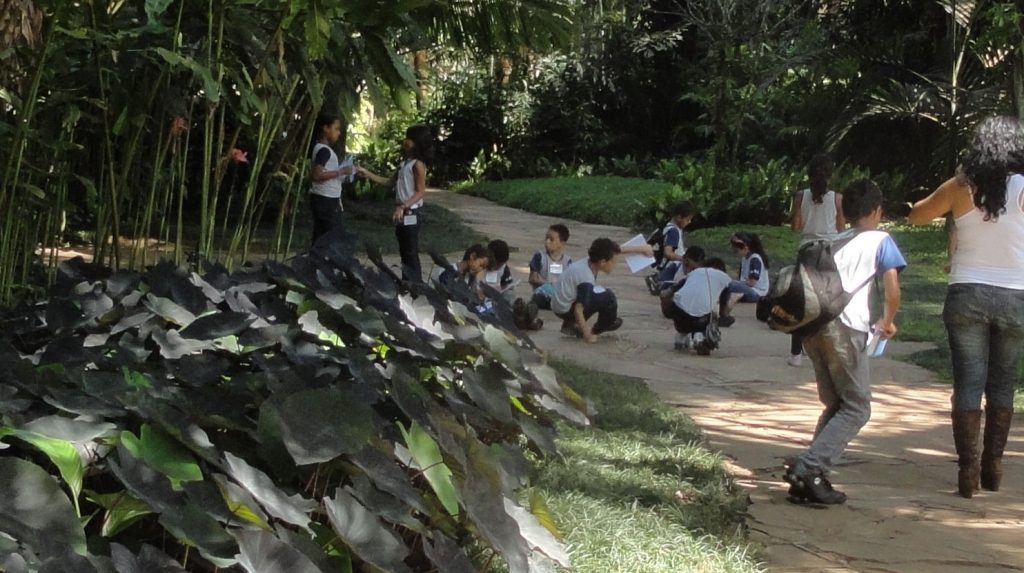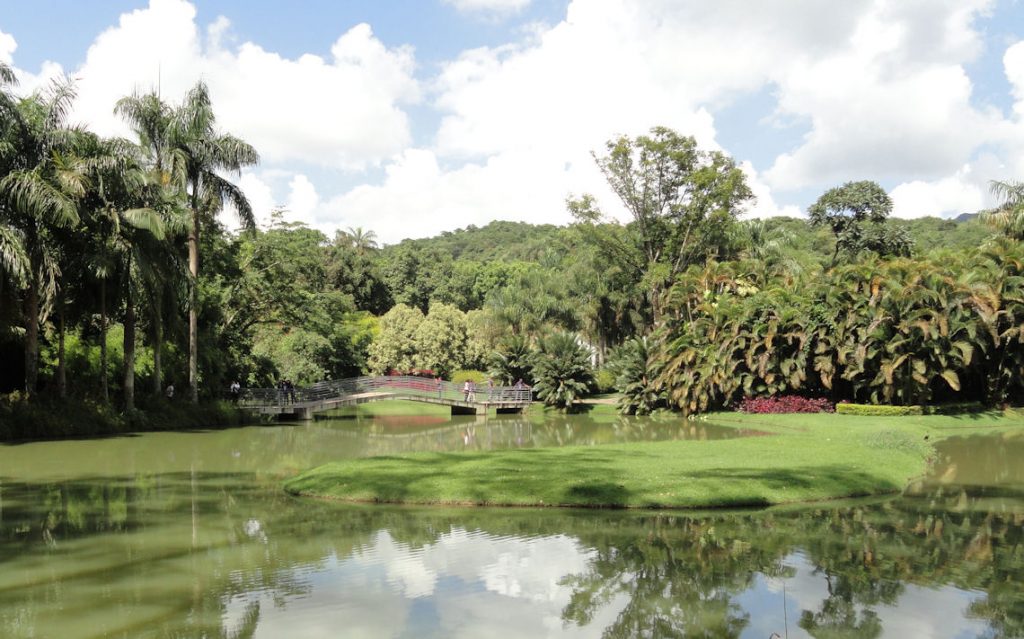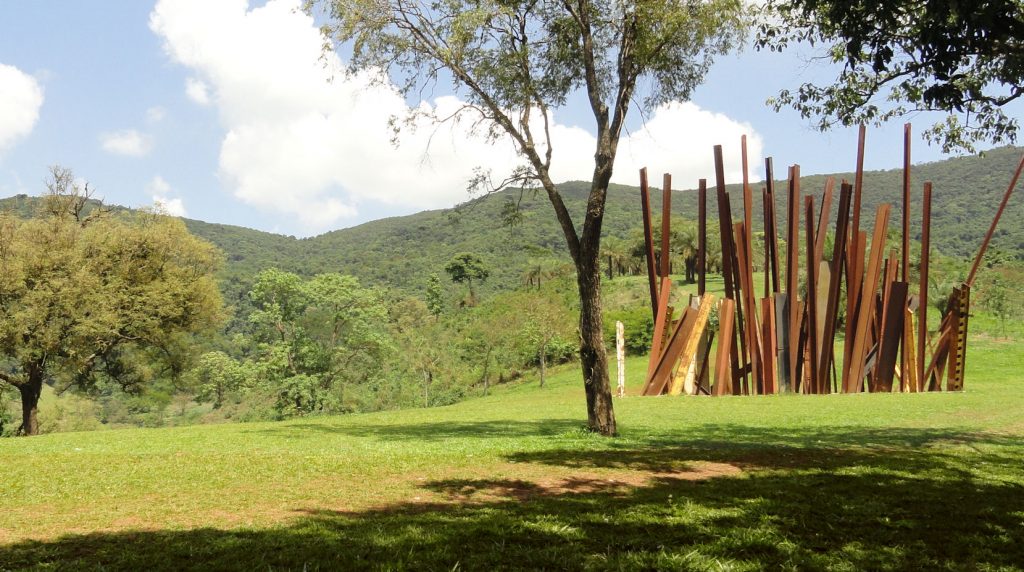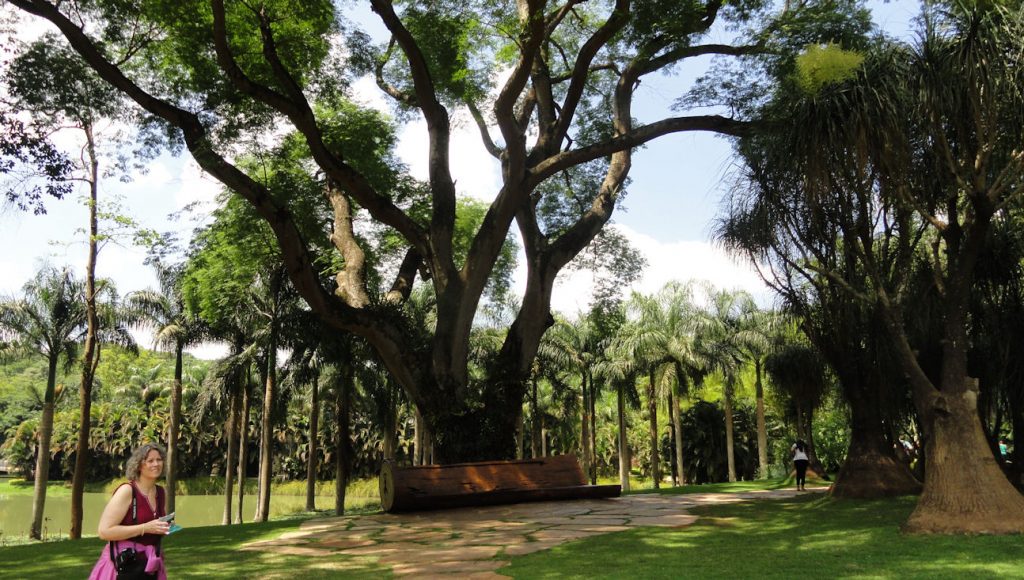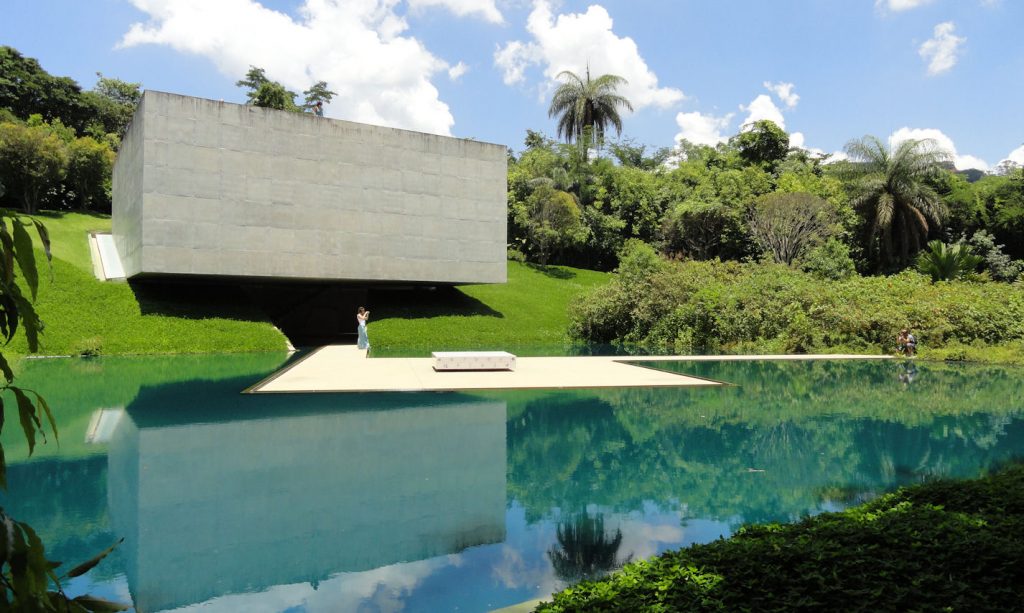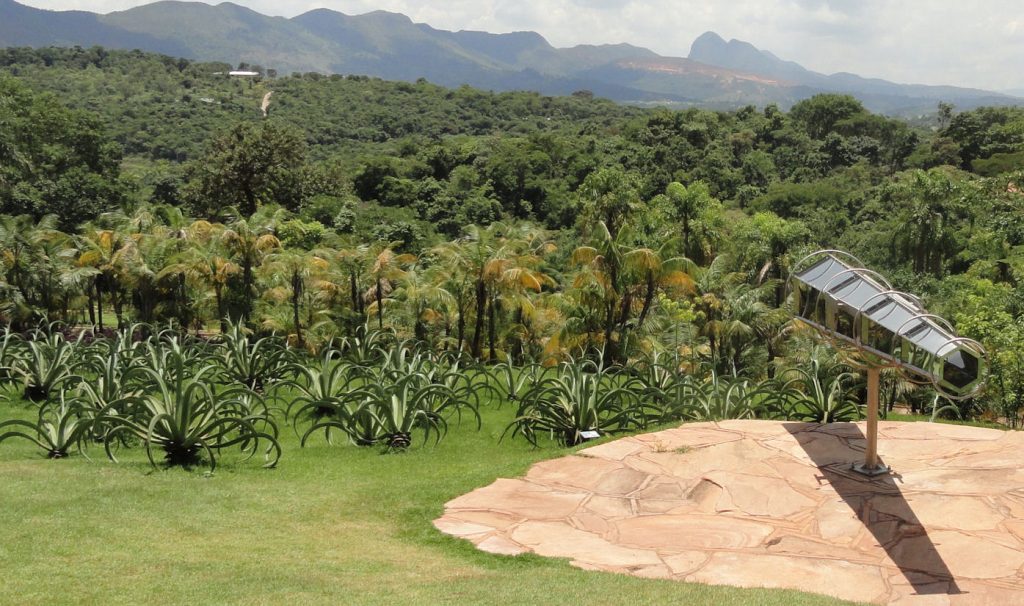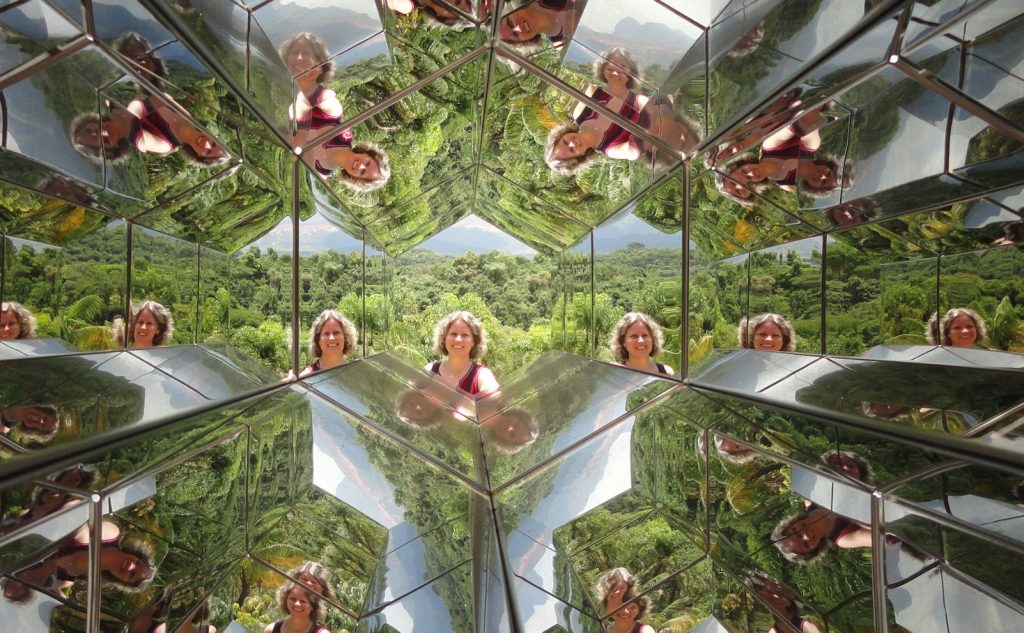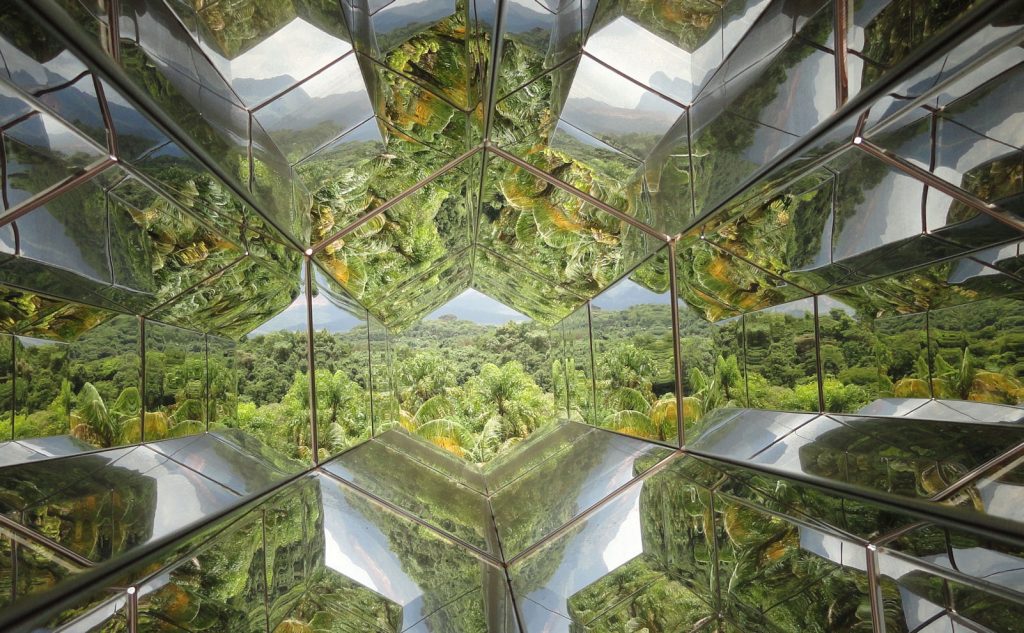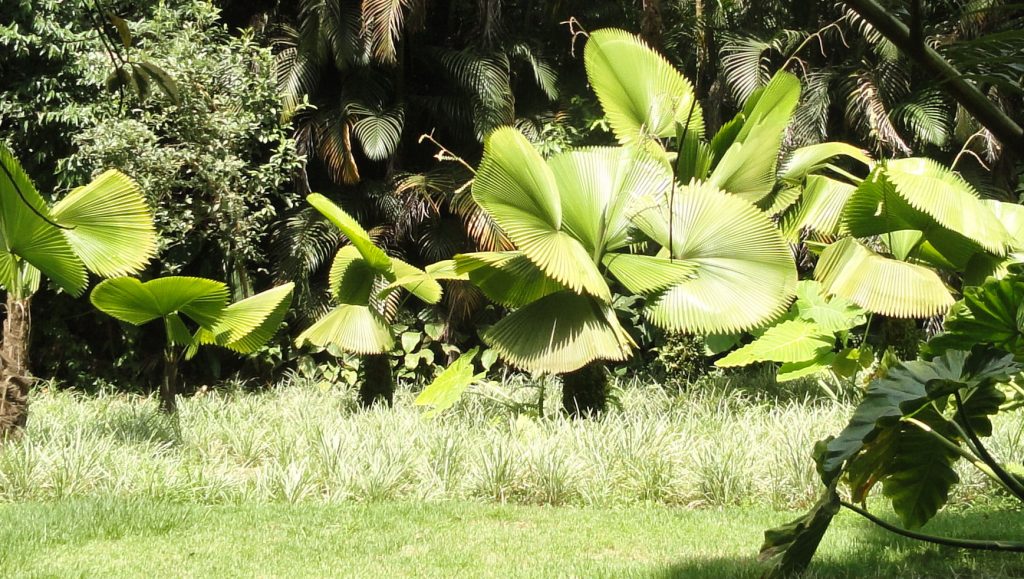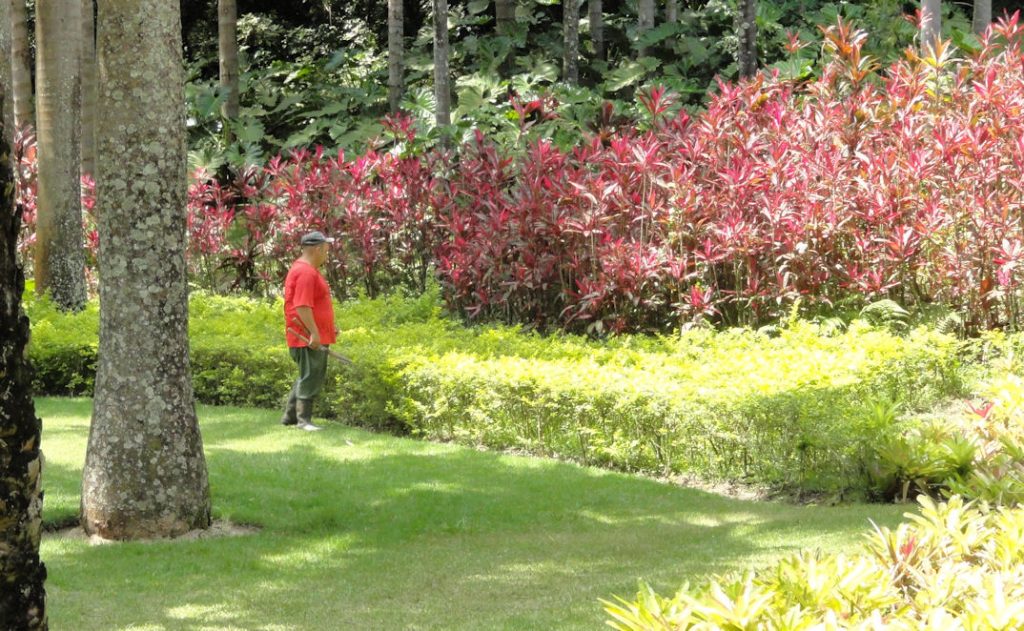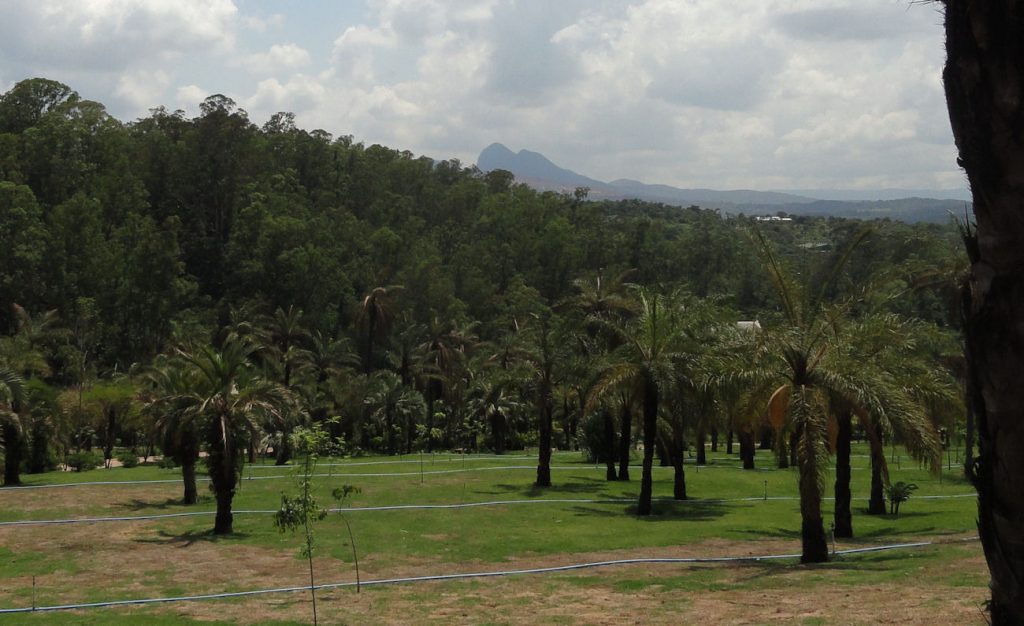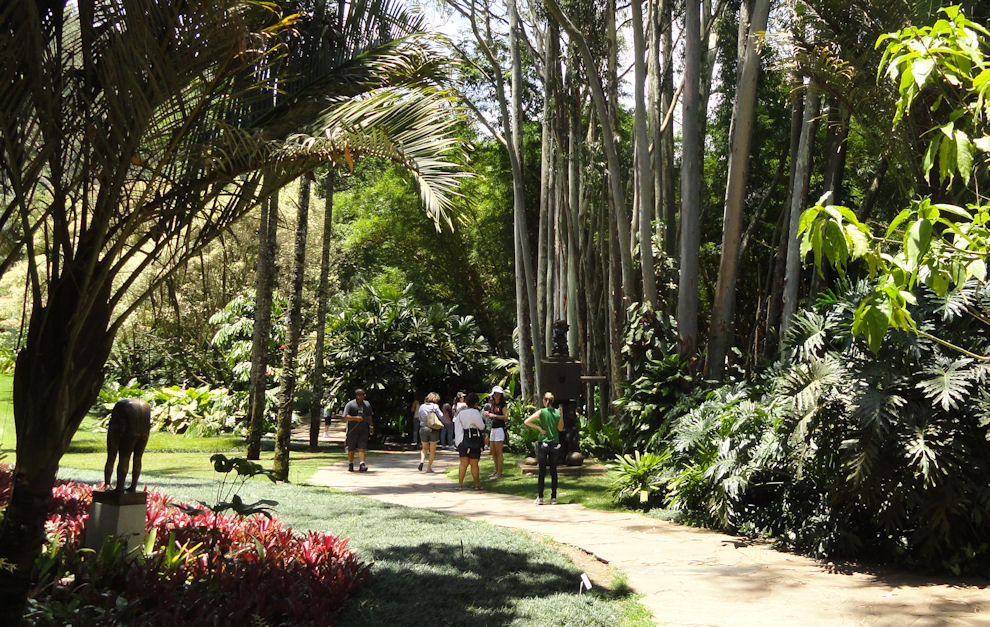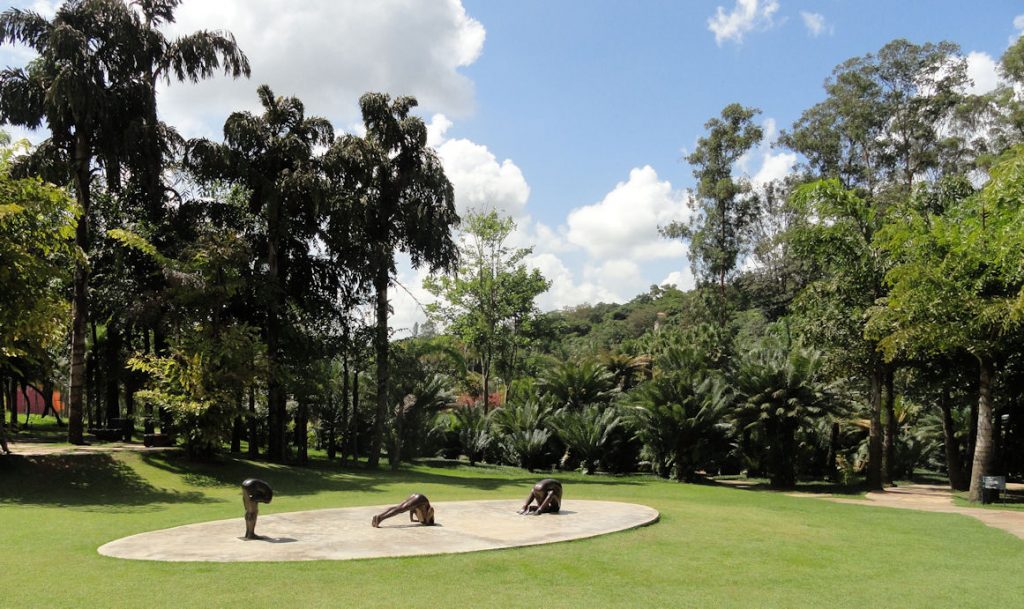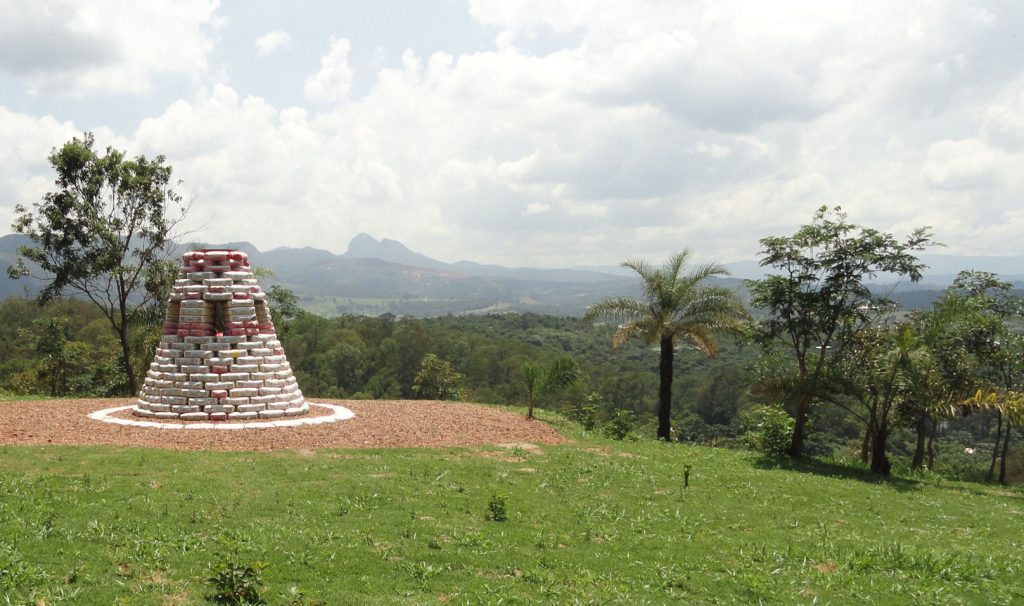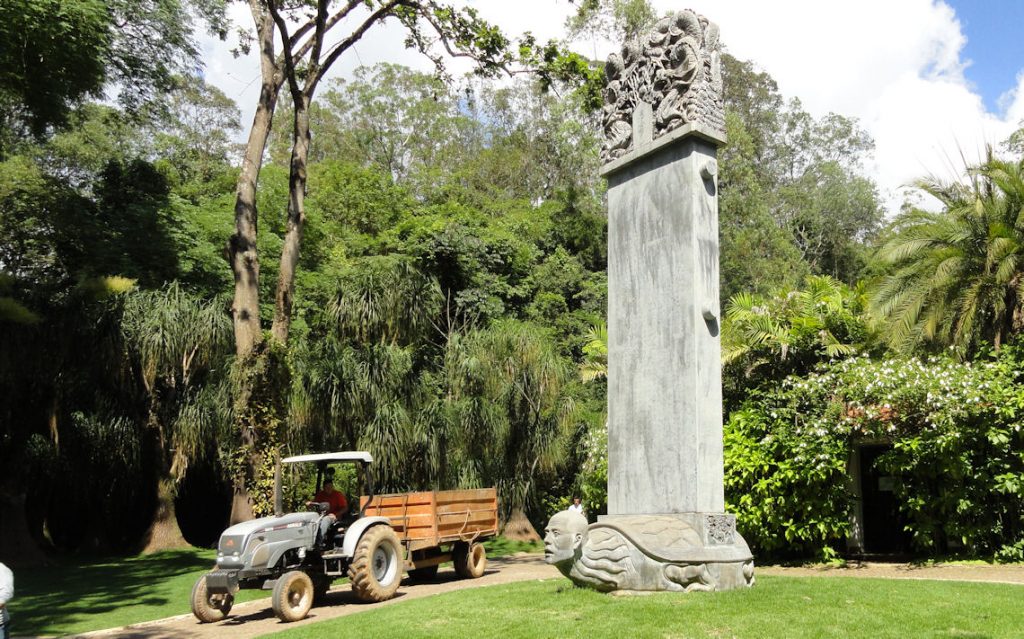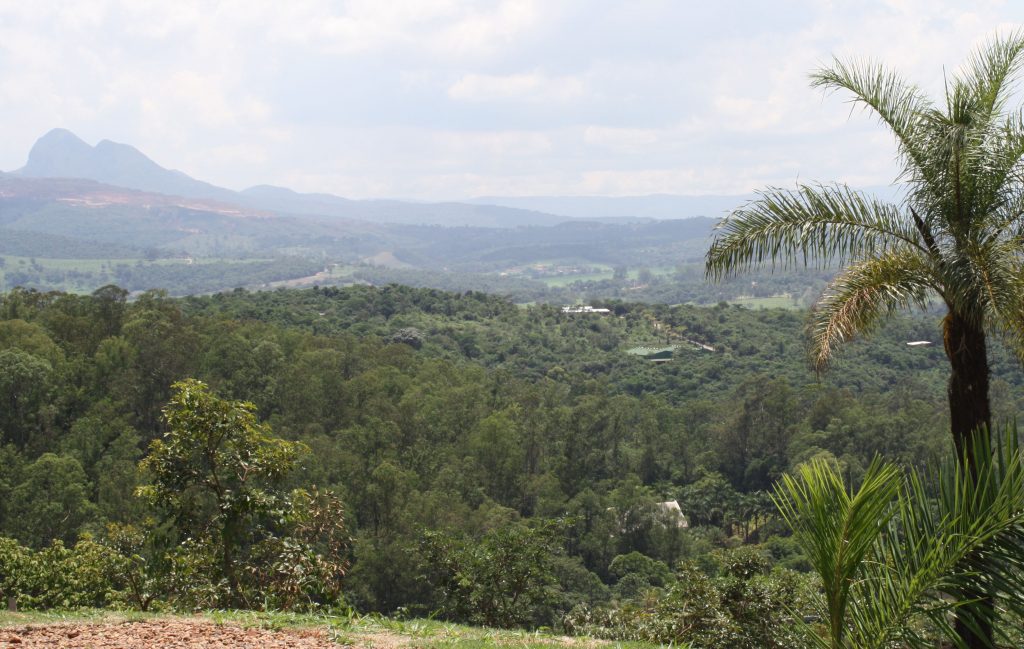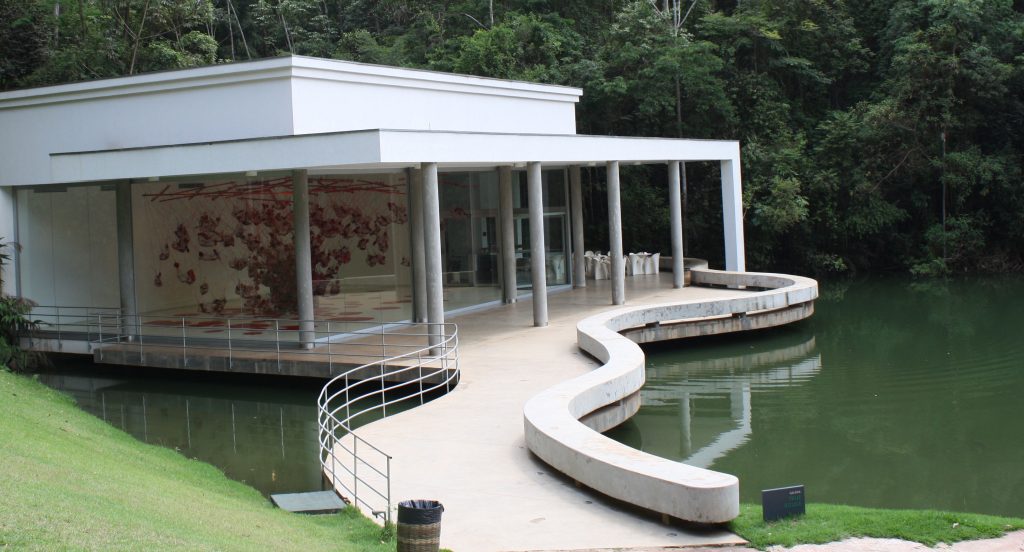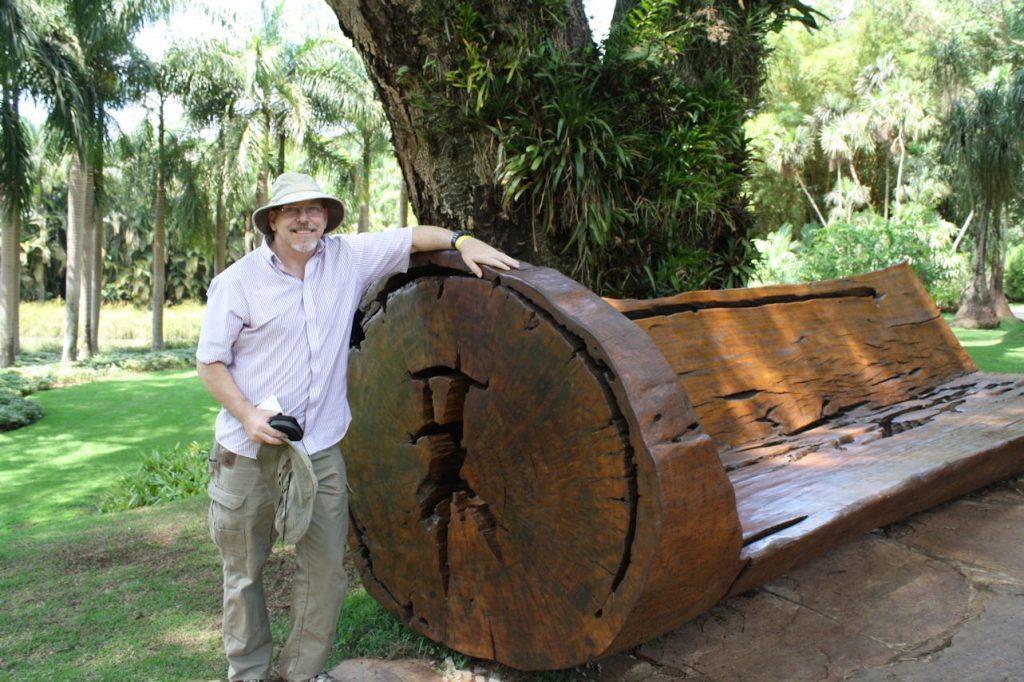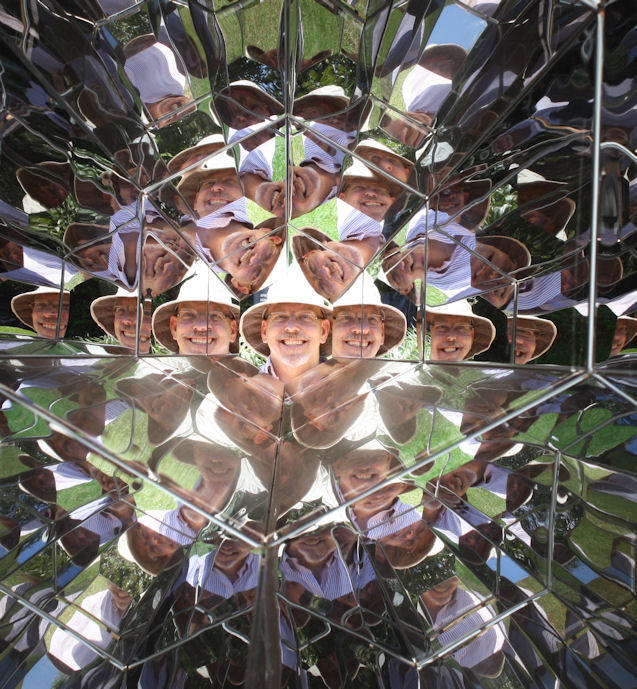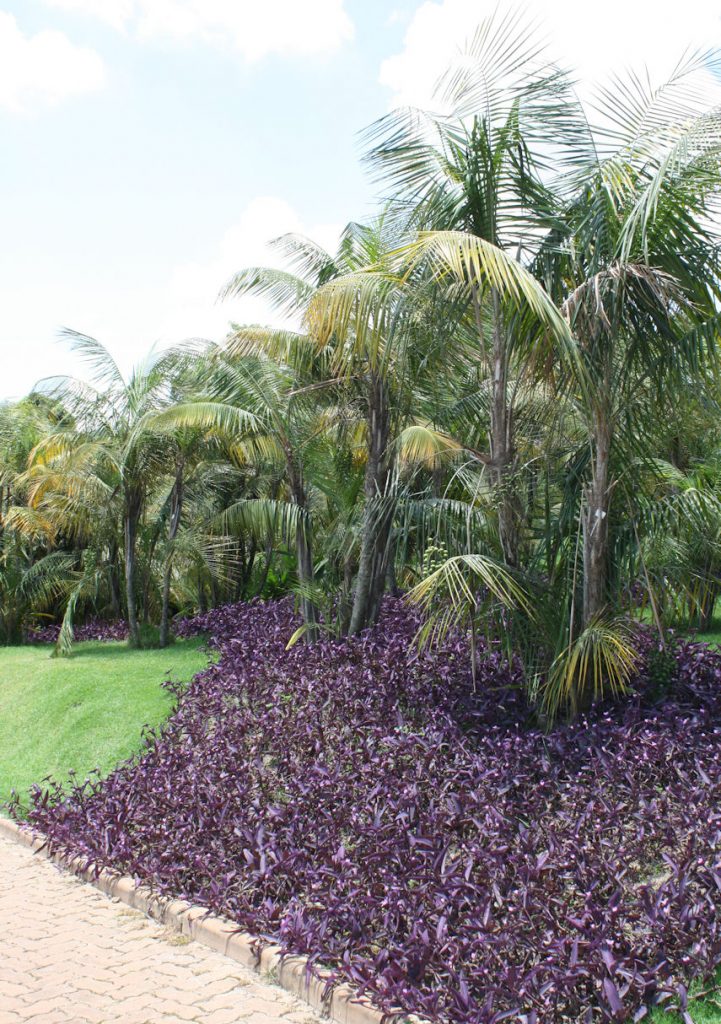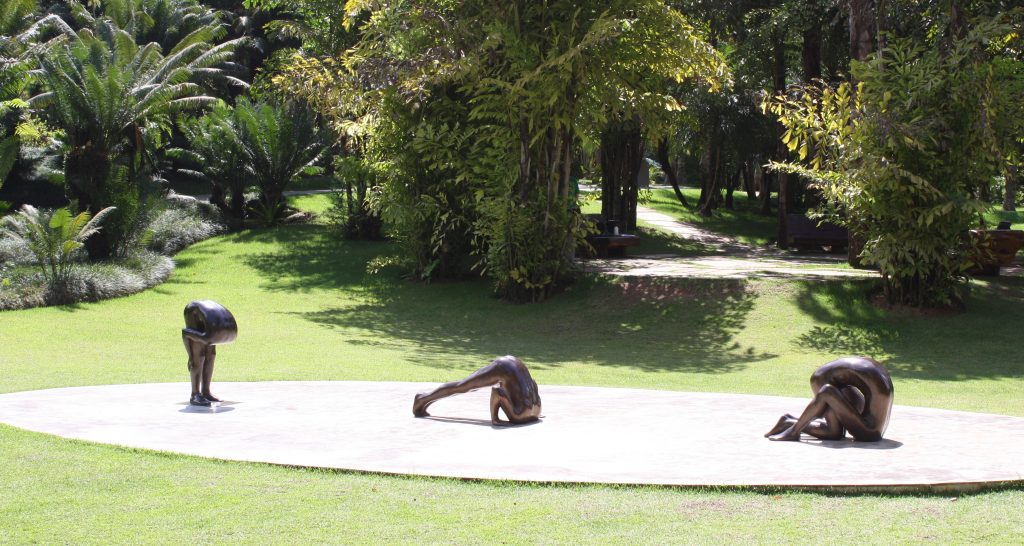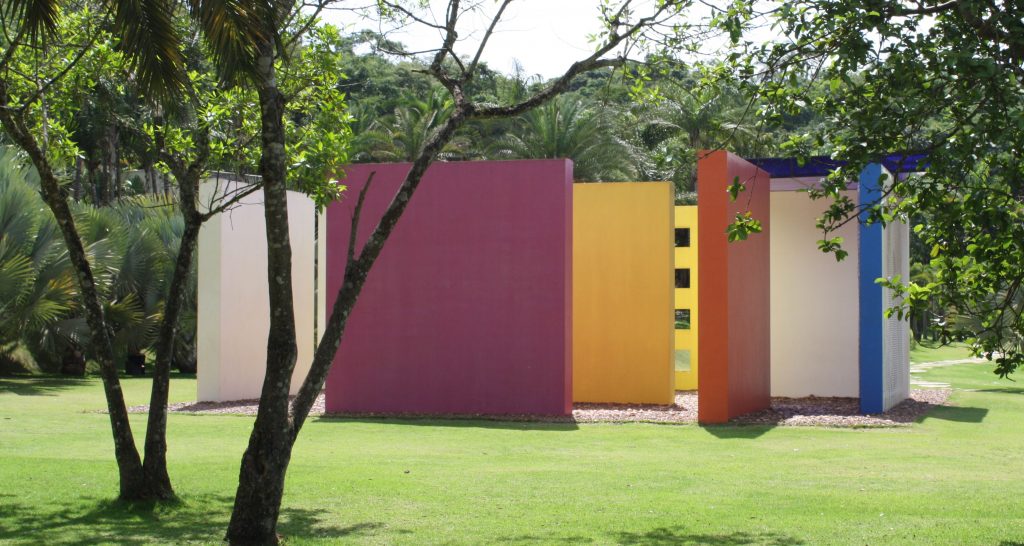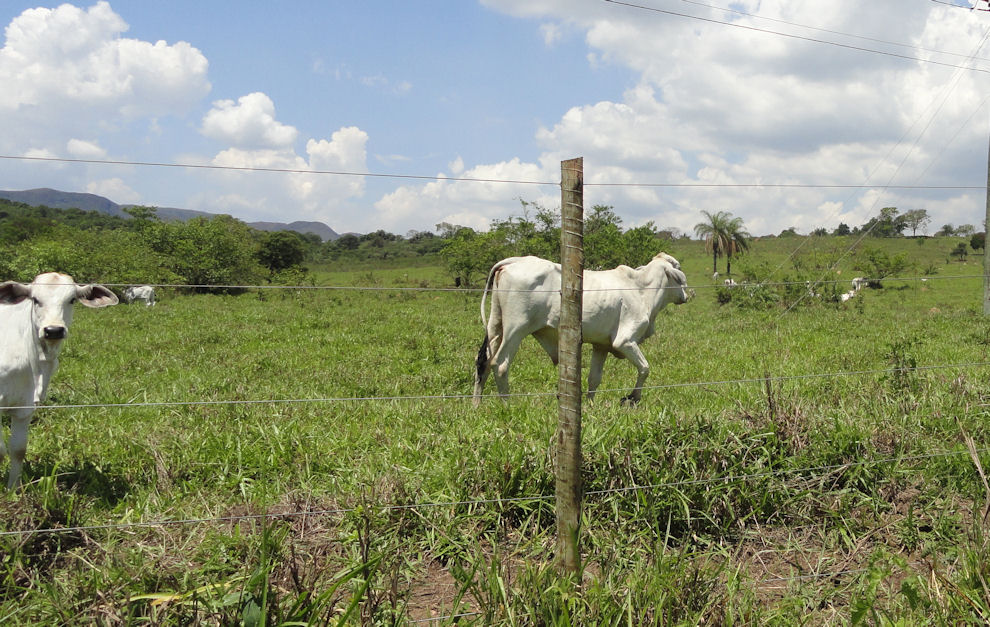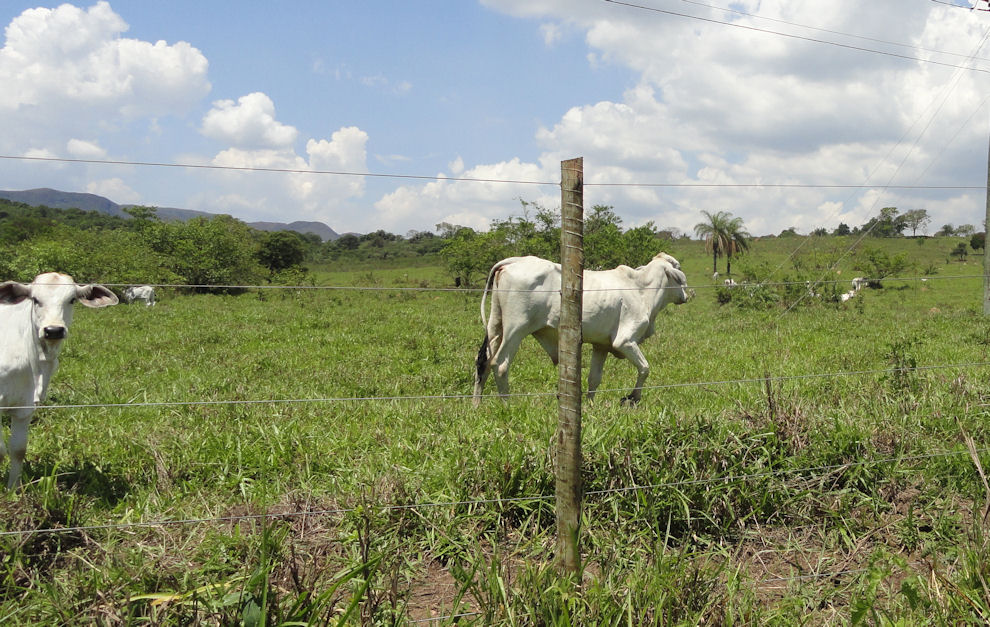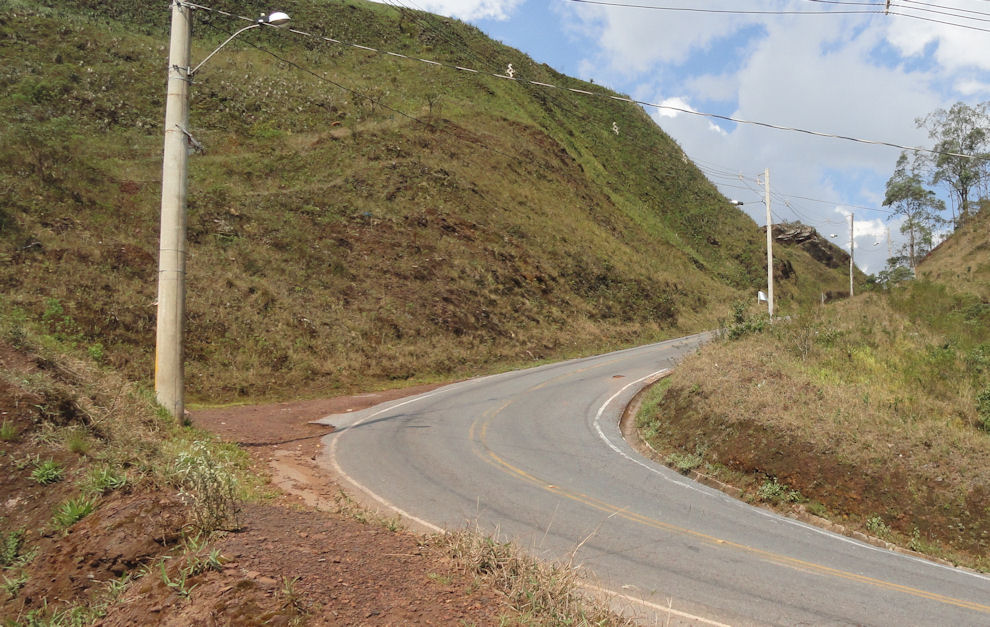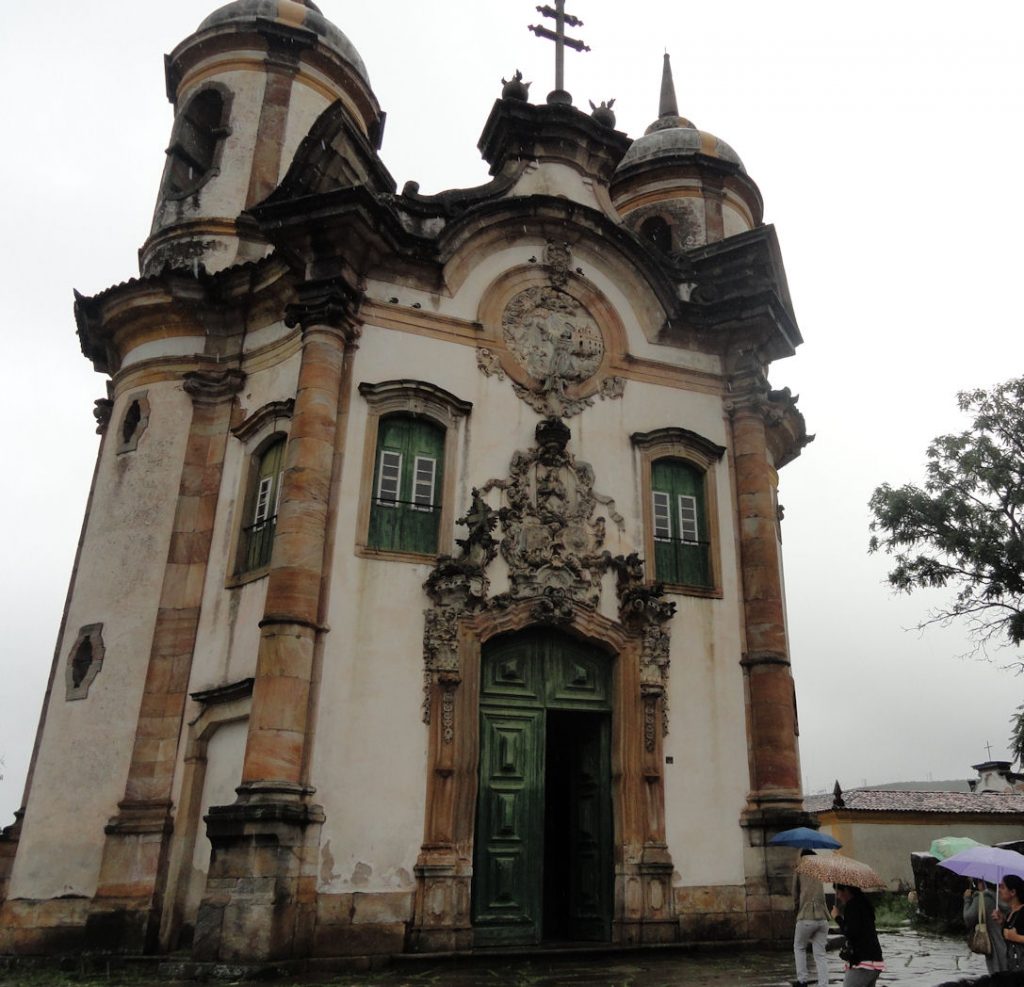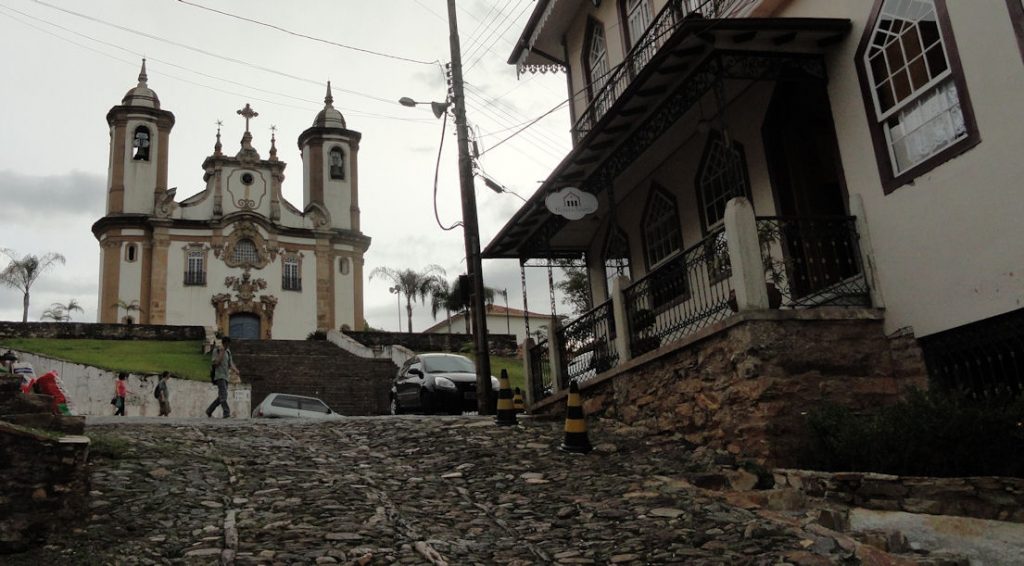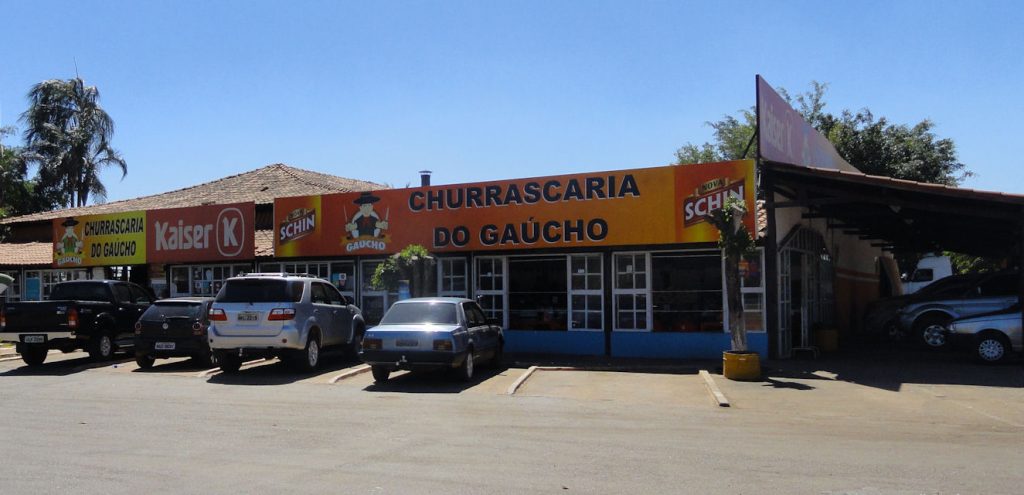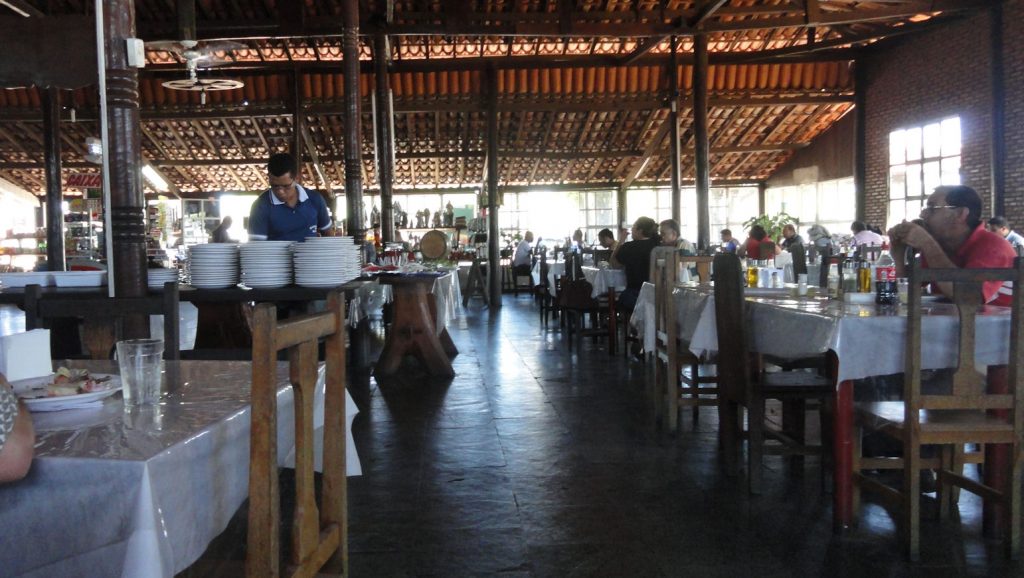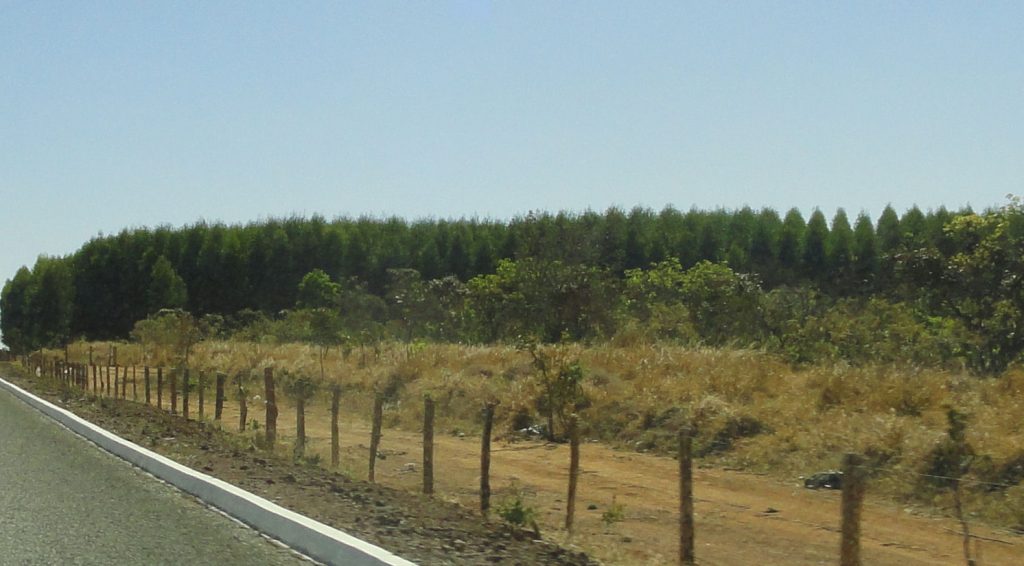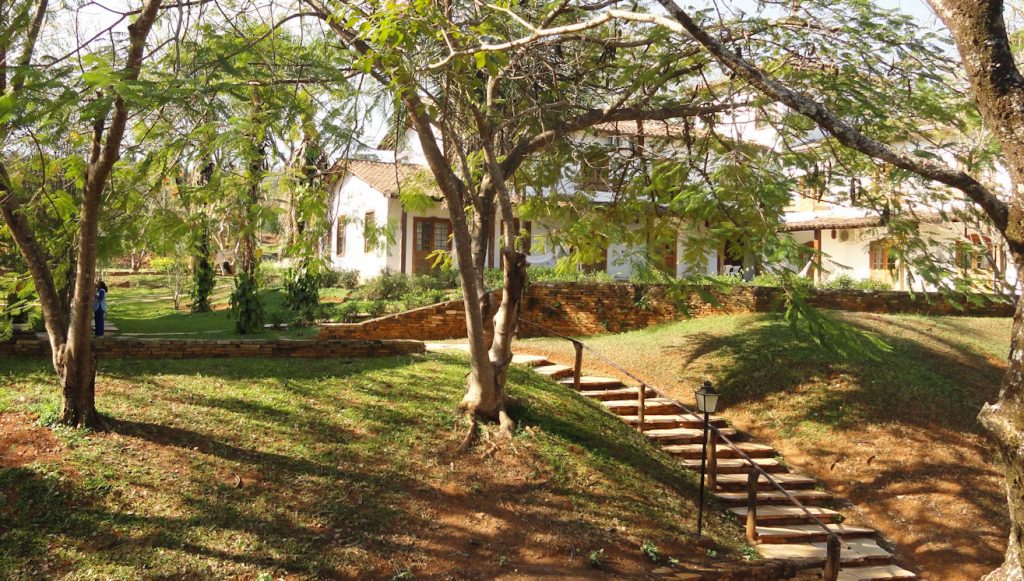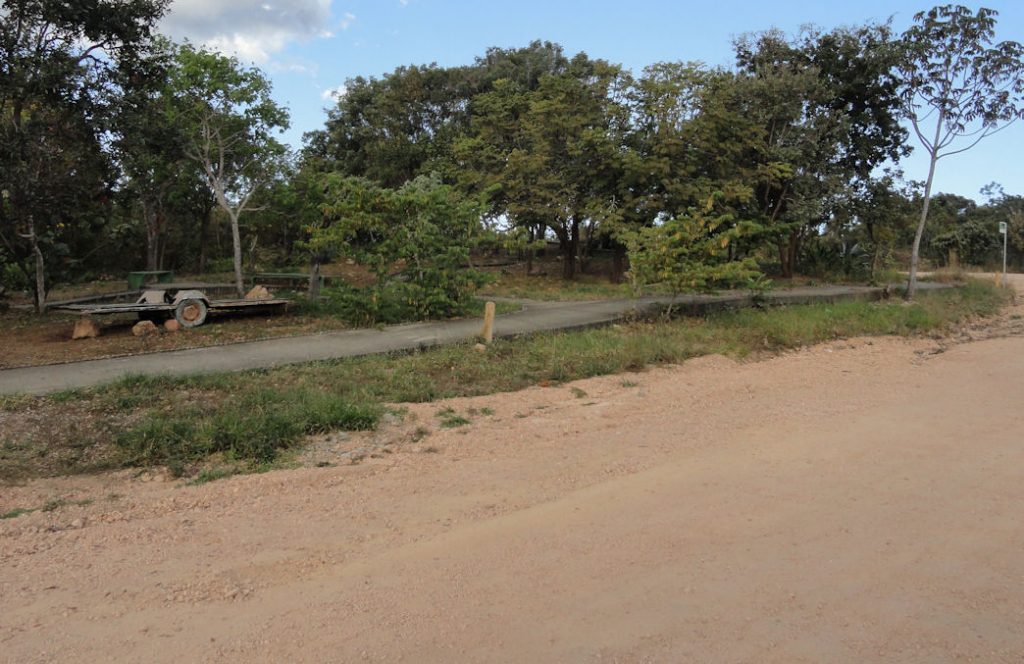
São Jorge seems farther away because of the long and lonely road you have to take to get there. If you had an Interstate type highway, it would be an easy day trip. Only the last twelve kilometers are dirt, but it has a lot of influence on the perception of the journey. You cannot drive fast and it is very bumpy. The roads within São Jorge are also all unpaved and this has a lot of influence over the perception of São Jorge. Notice in the picture below that they have well marked streets, even if the streets themselves are not well marked. Notice in the photo up top that they have a paved sidewalk, but the street is still just dirt.
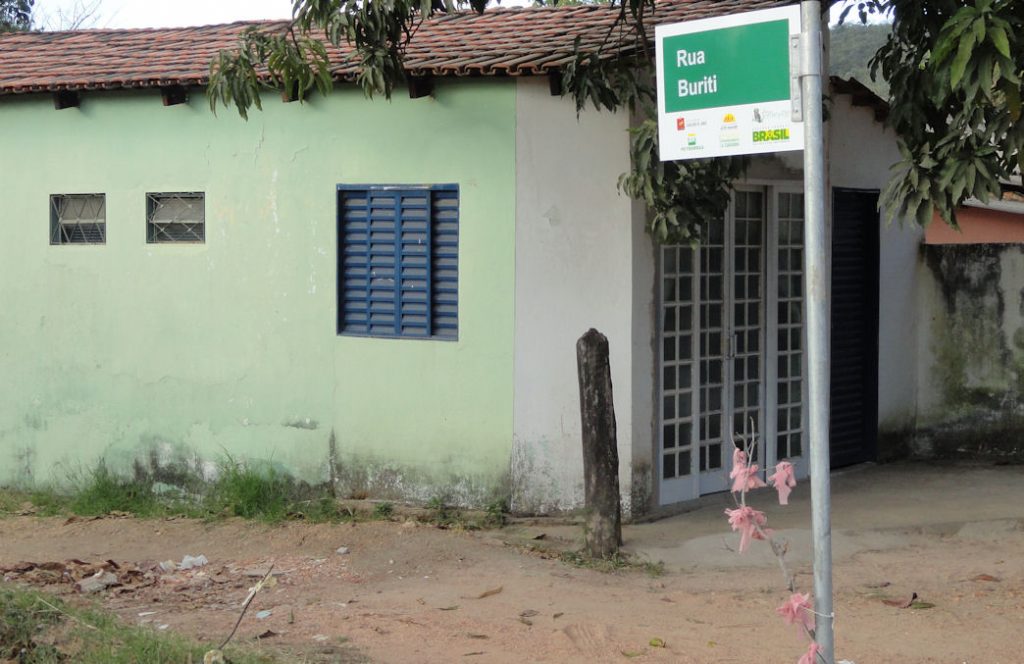
São Jorge is the gateway to the Chapada dos Veadeiros Park and mostly depends on eco-tourism. There are lots of posadas, each of them idiosyncratic and more restaurants than you would expect for a town like this. I suppose you could describe the accommodations at both as “alternative.” There is kind of a hippie feel. It reminds me of Sedona, Arizona – or like Sedona might have been years ago. São Jorge was a center for crystal mining and people who believe in such things think that it is a focus of spiritual energy, so it draws some of the same sorts as Sedona. People came to the area last year when the Maya predicted the end of the world. Evidently this area would have survived had the Maya been right. Locals seem undisturbed by these people, but there are new age type shops that cater to them.
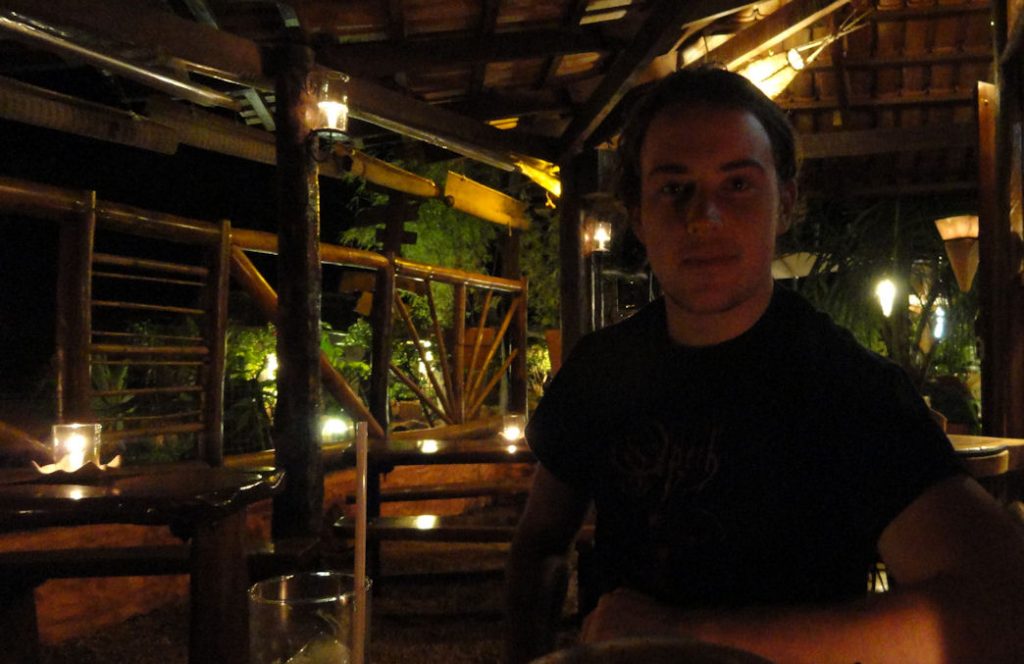
We stayed at a place called Bambu. It is a delightfully relaxing place with a very distinct personality. Tranquil is the word I would use to describe it, if I had to pick one word. It is near the edge of town. Of course, in a town this size most places are near an edge. But you can walk down the busy main street. I say “busy” only half in jest. There are a lot of people walking around. On the corner down from Bambu is a little store where you can buy sandwiches for your day trips into Chapada dos Veadeiros. And down the street is a good restaurant called Nenzinha, where you pay by the kilo. The restaurant at Bambu is very nice with a wide selection of food, if you like variations on lasagna. The pleasant ambiance makes up for the somewhat limited menu.
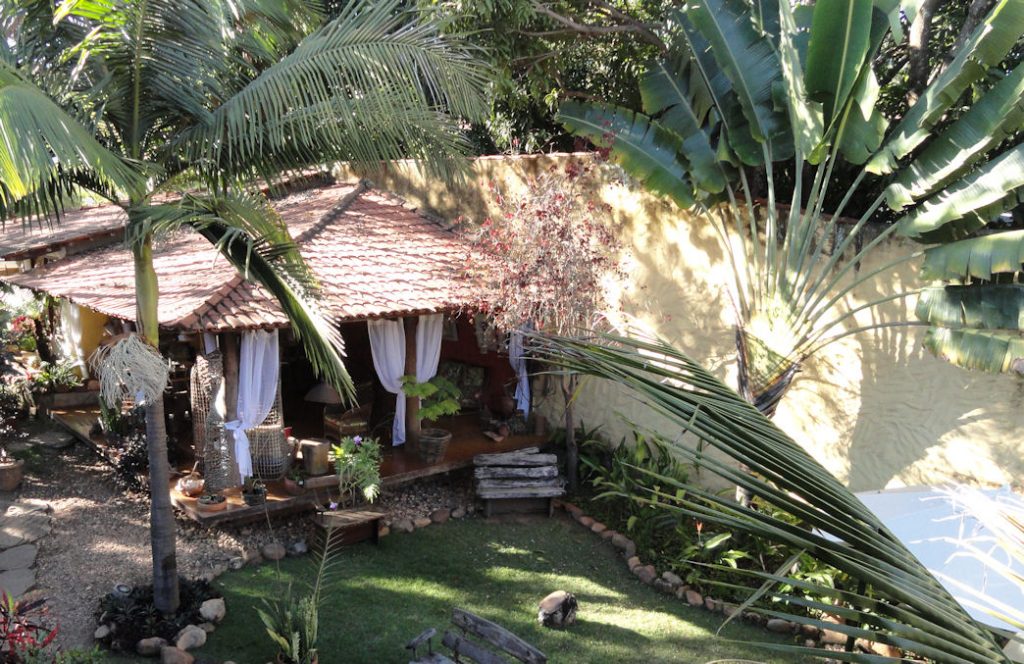
They do have a very large variety of liquor and mixed drinks. Espen and I had the usual caipirinha, which is Brazil’s national cocktail. It is made with cachaça, a hard liquor made with sugar cane. Some people prefer vodka, which is then called a caipiroska. It is a distinctly inferior drink. Vodka has no taste of its own. Instead of a caipirinha, you just have a kind of sweet lime drink. Stick with cachaça. A warning is in order, however. Caipirinhas are much stronger than they seem.
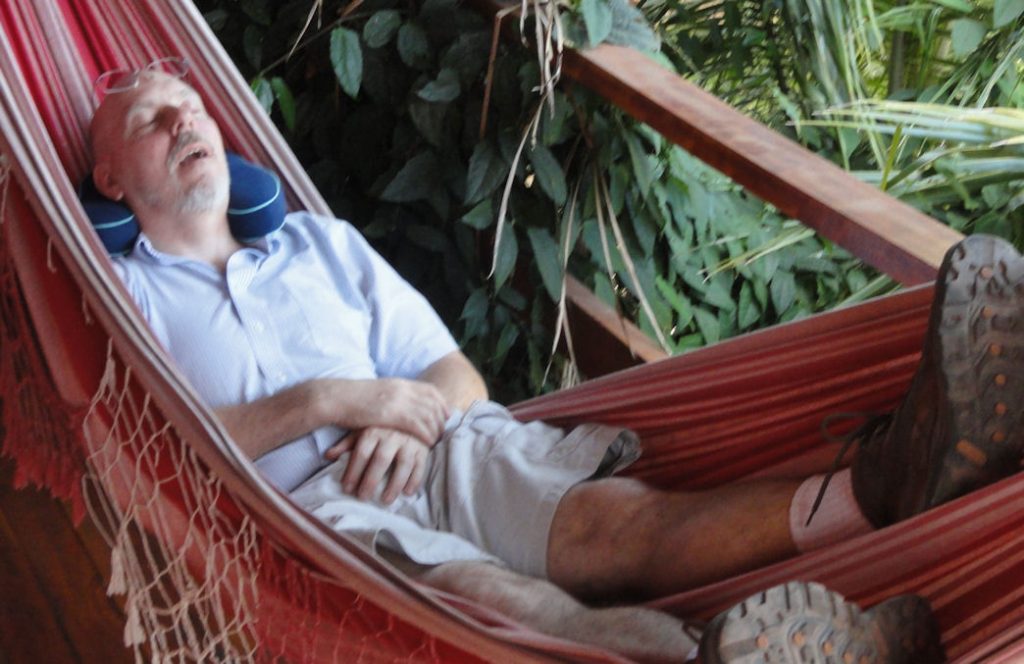
Notes from my first trip to this area are at this link. Look at the ones before and after too.



